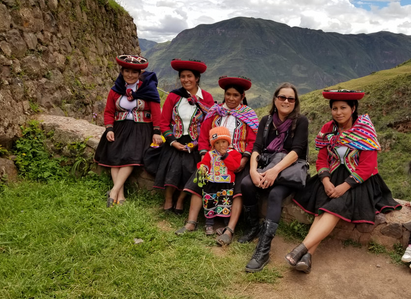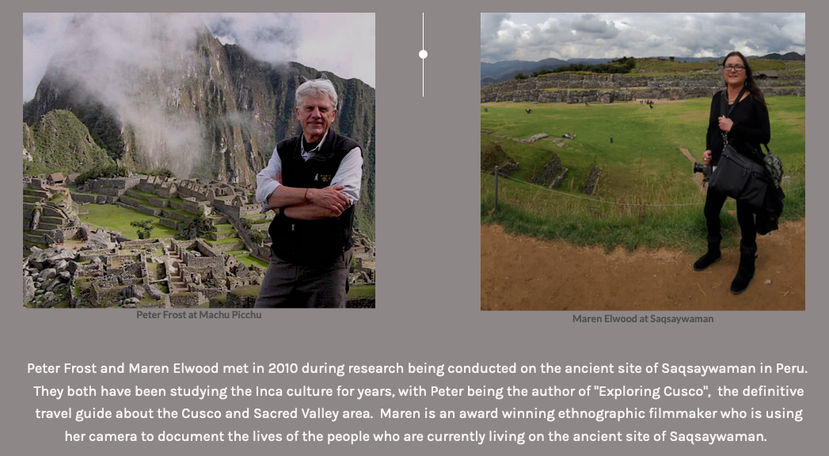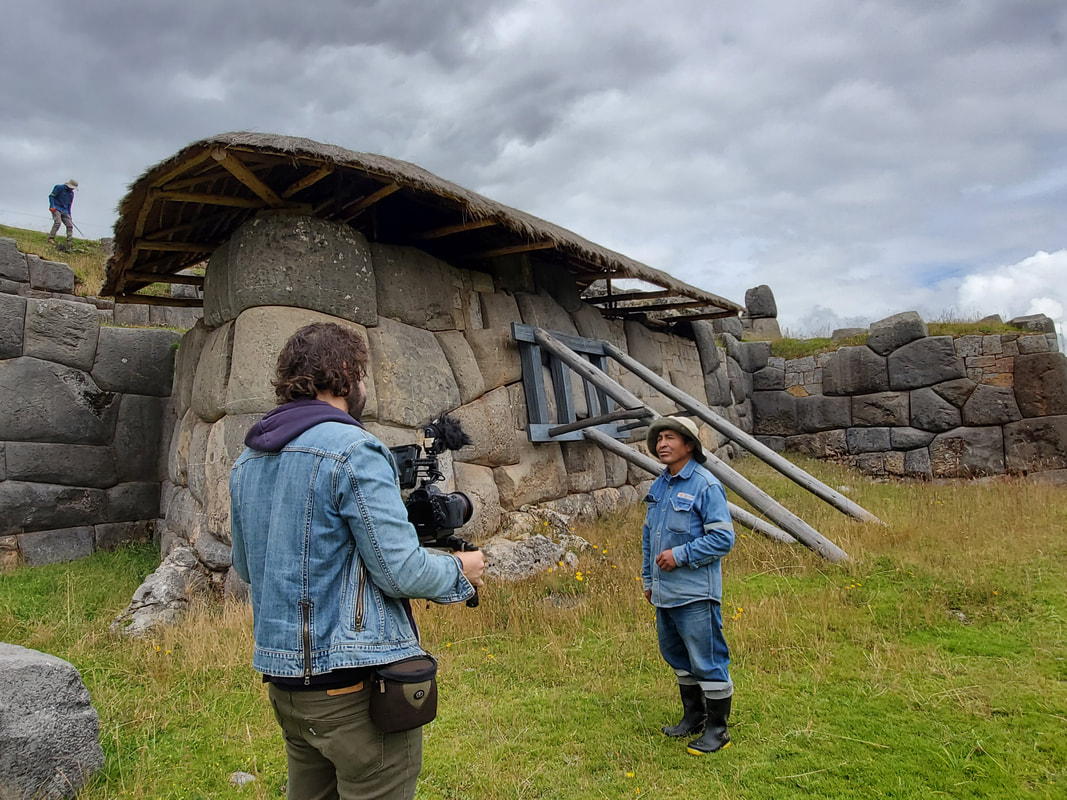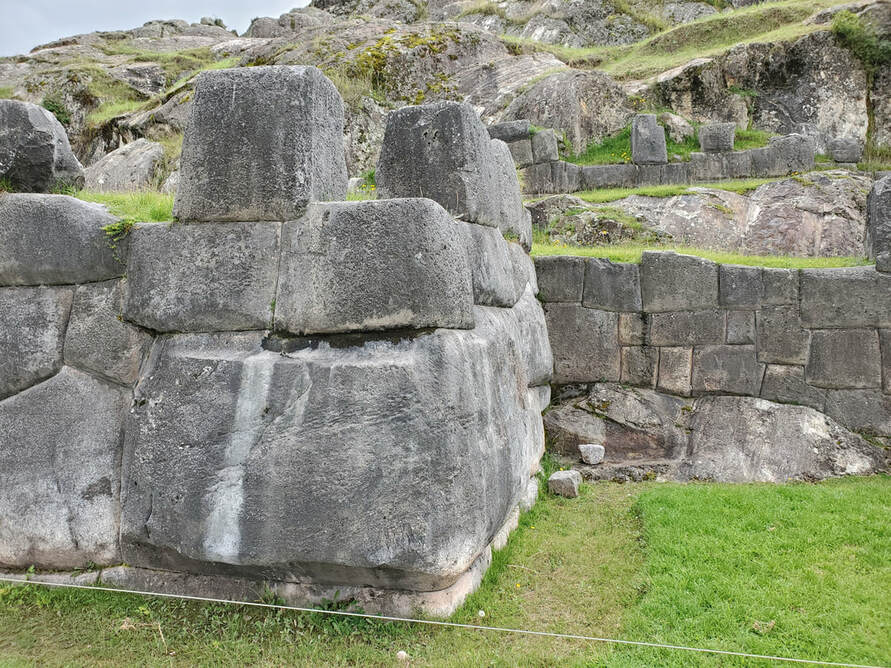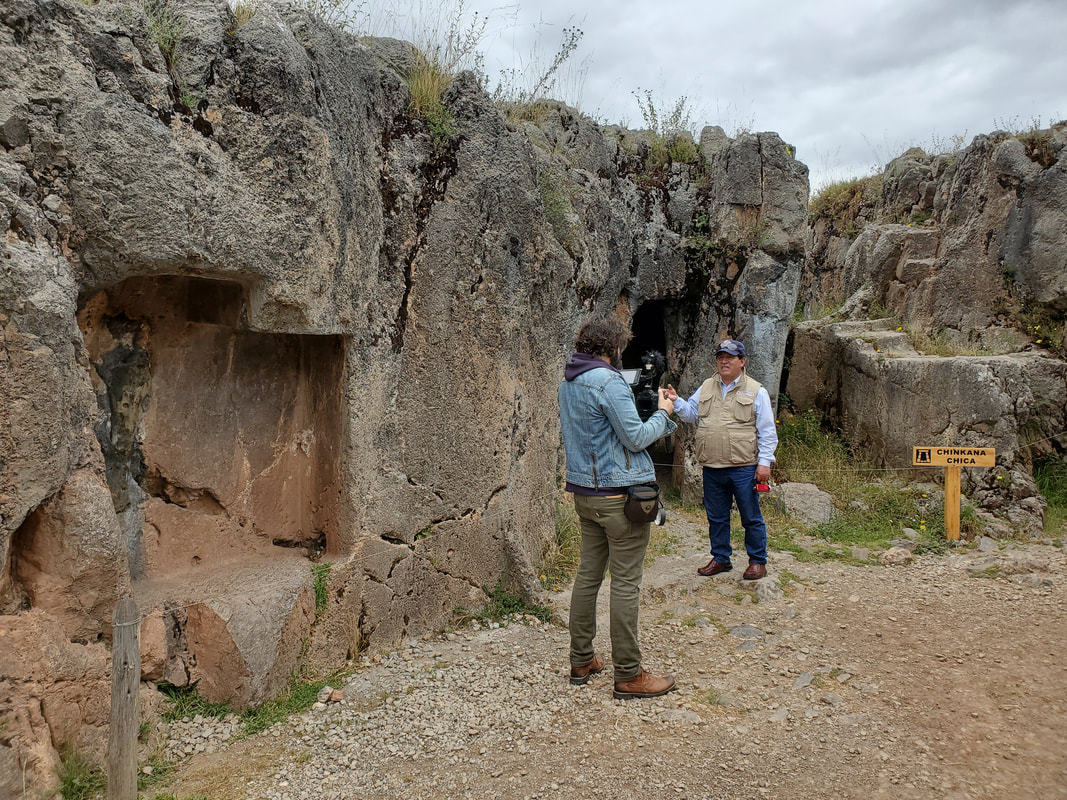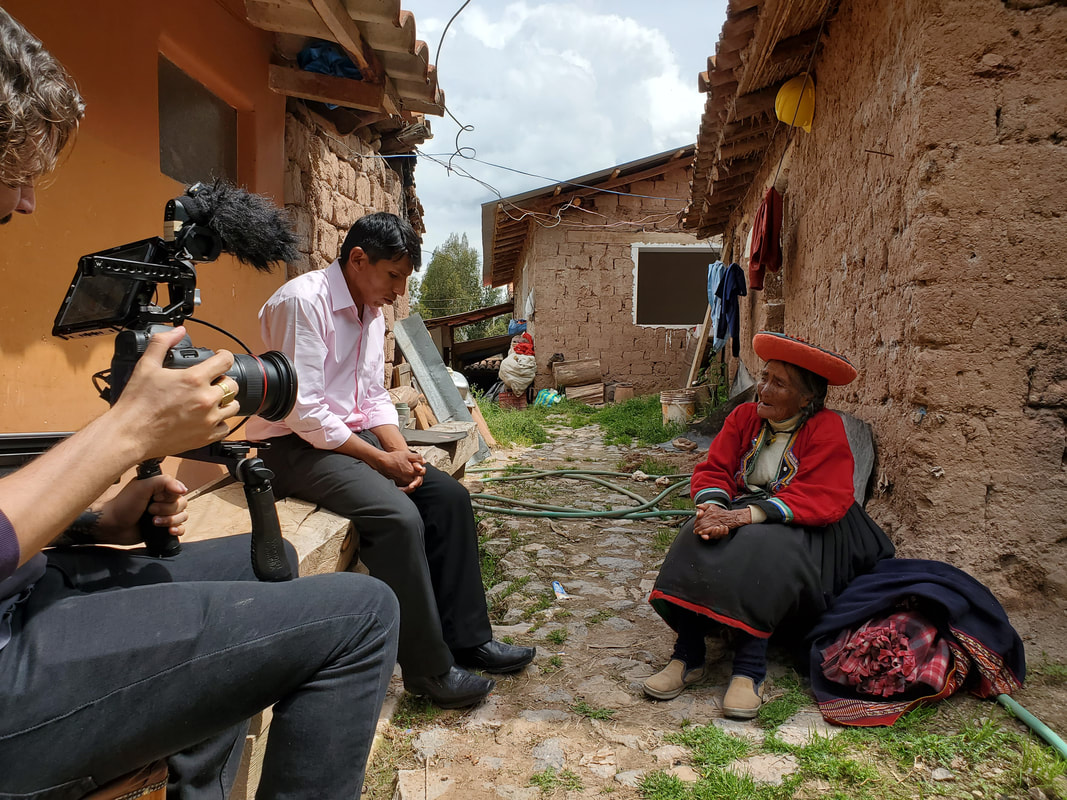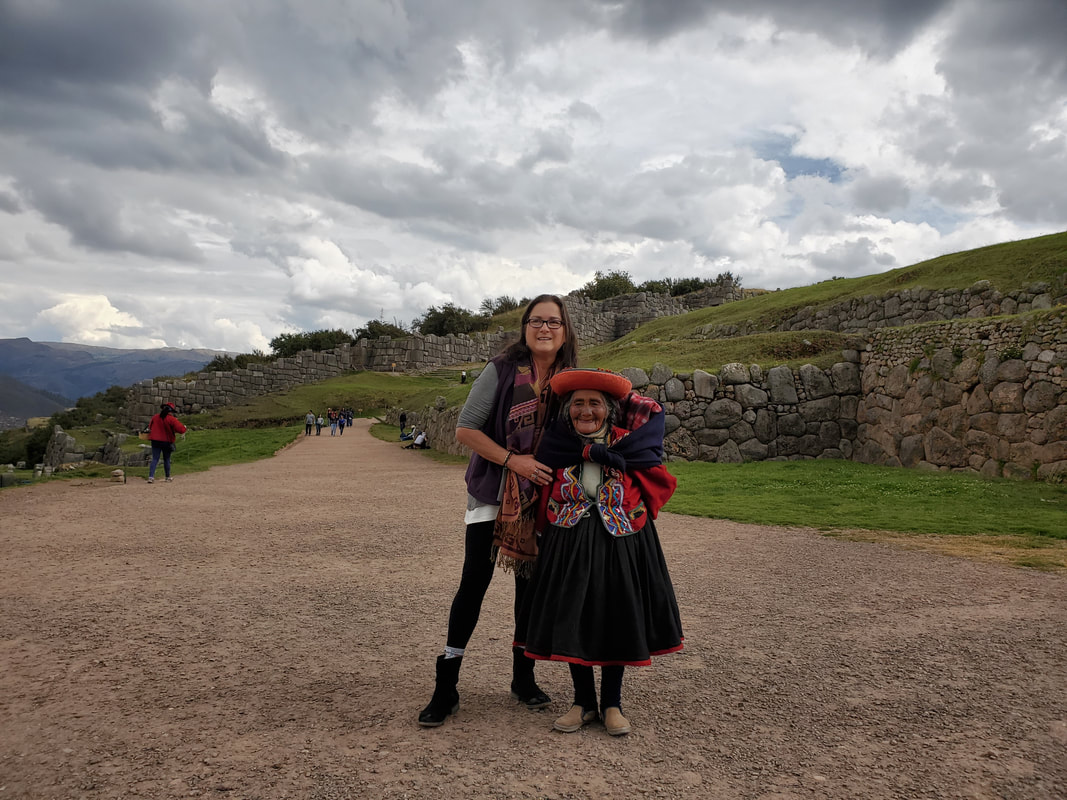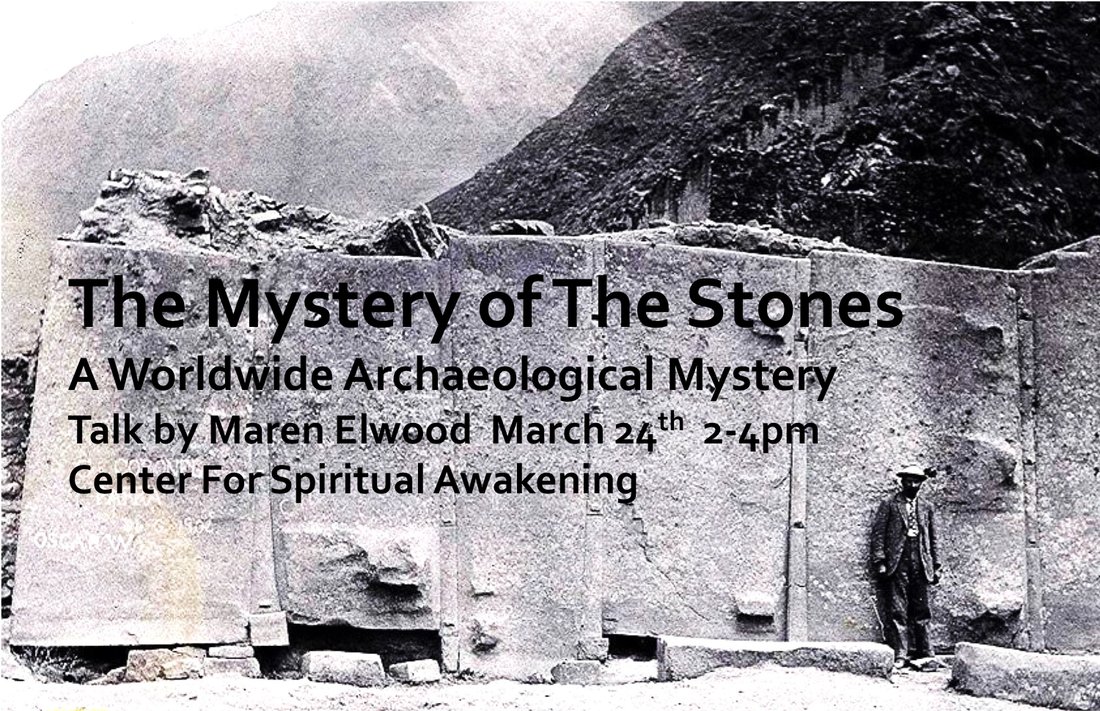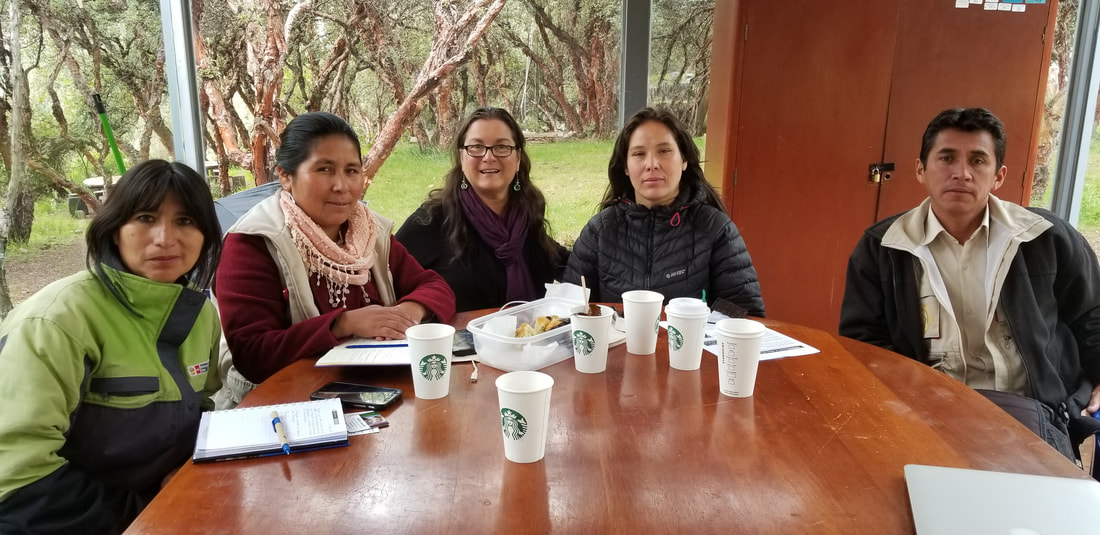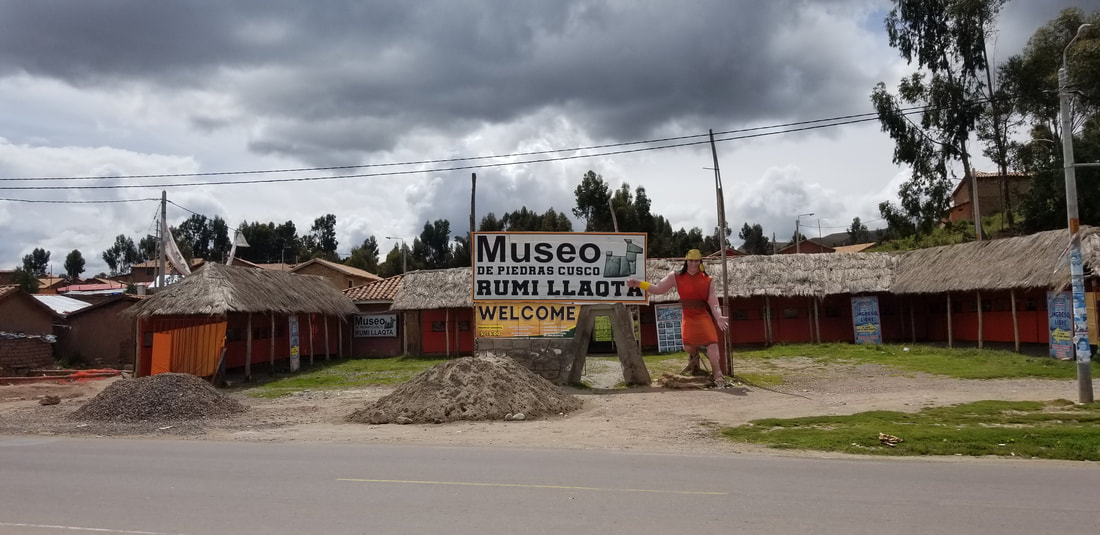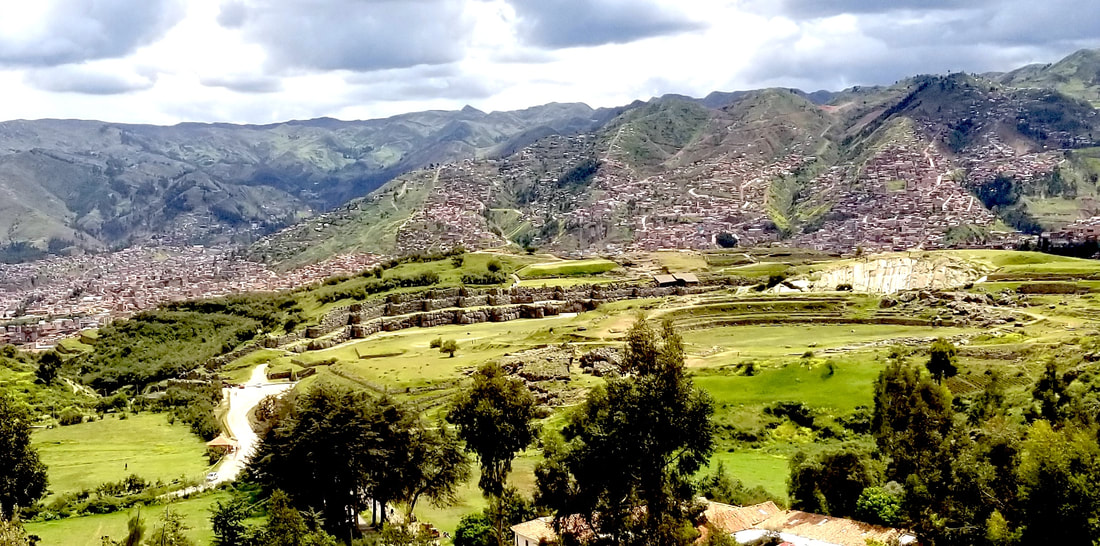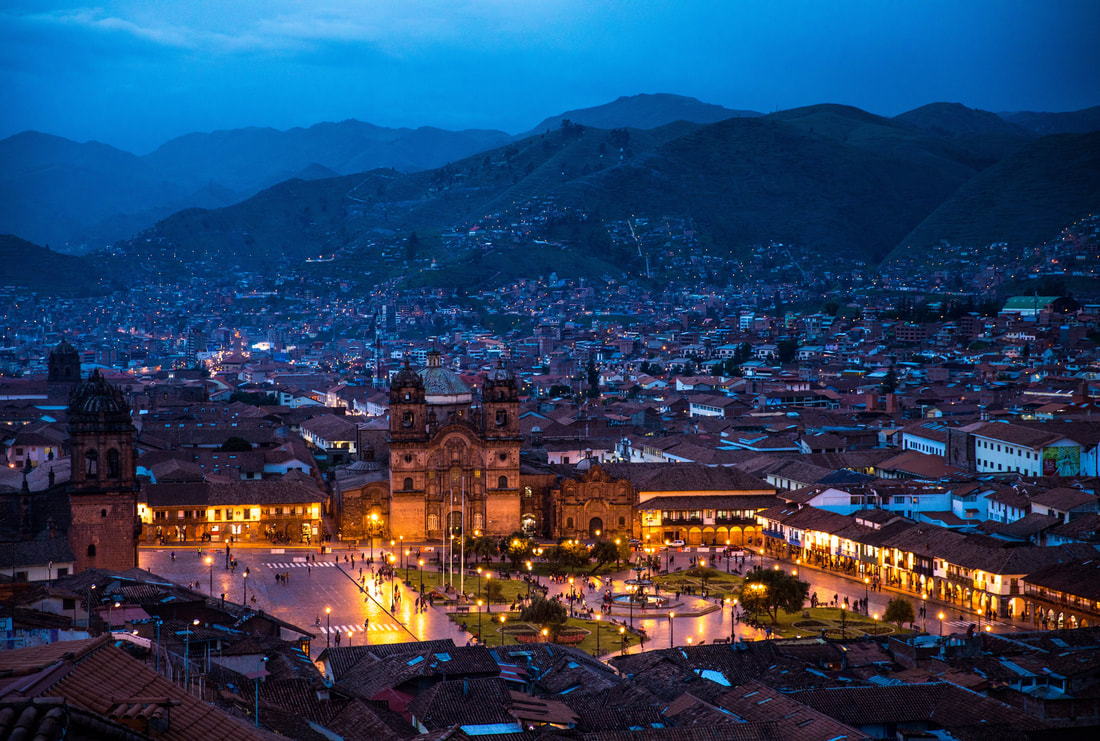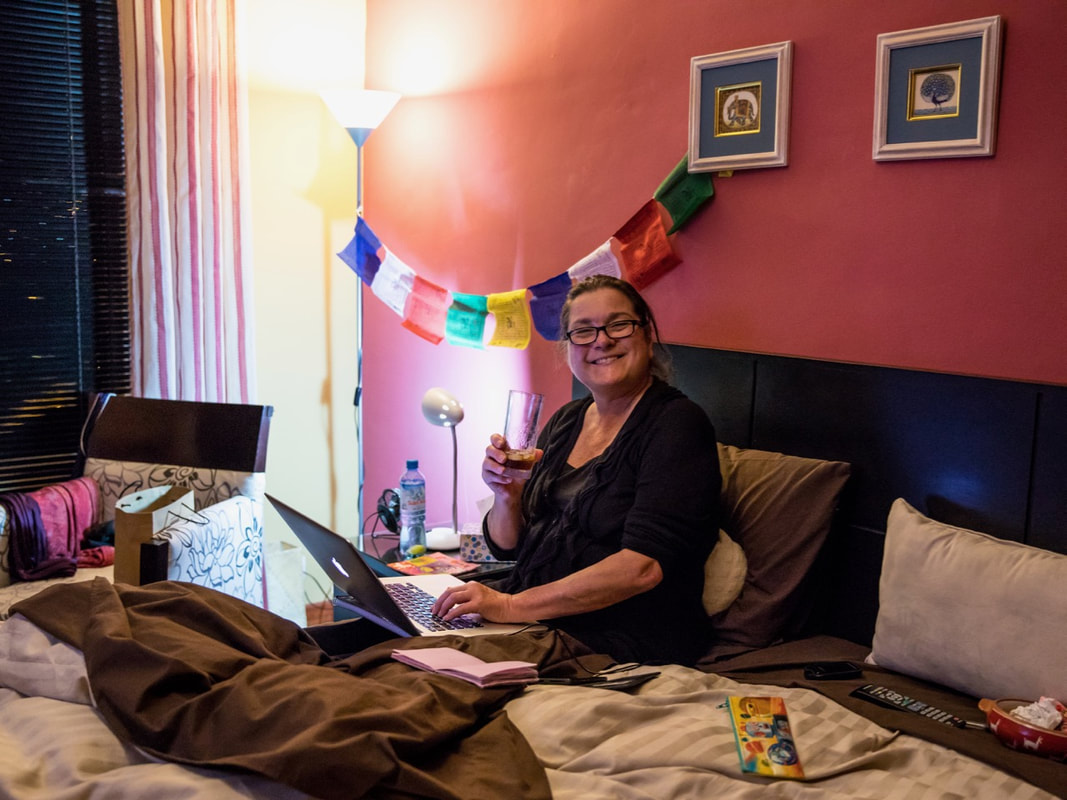|
Hi Everyone and thanks for your continued interest in my work in Peru. It's been so long since I've been there, but I think about the archaeological site known as "Saqsaywaman" and the people I work with there everyday!
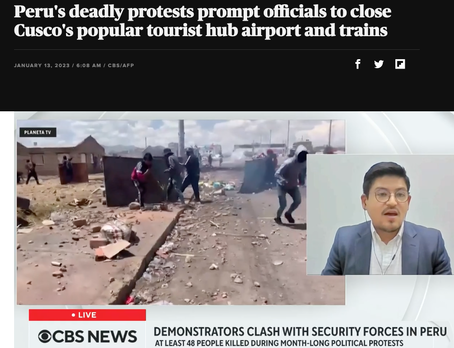 Peru, as with many other countries, has experienced social conflict due to the disastrous effects of COVID and the unfair social treatment of people during this challenging time. It really hasn't been safe to travel to Peru (both physically and medically) for the past few years. My friends there think that it's safe enough for me to go again in January 2024. I'll be monitoring the situation and make the decision in November of this year. 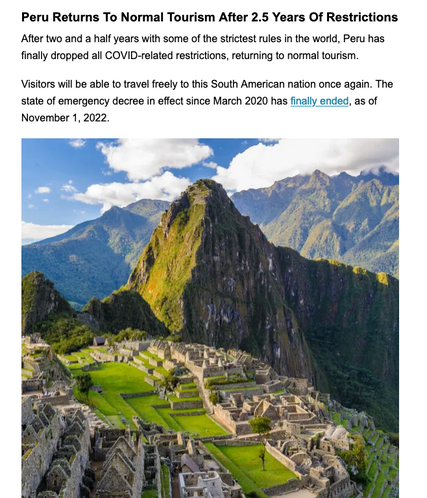 It's been hard to get news of what's really going on at the Saqsaywaman archaeological park. I've heard various "rumors" of looting during the pandemic and that it was hard for the local people living on the site to get vaccinated. Tourism of course took a big hit the first few years of COVID, but now seems to be returning to some new normal now. And the economy in Peru has really taken a hit during COVID. Many of the people I work with in the communities that are on the Saqsaywaman archaeological site have really suffered due to loss of tourism and the ability to sell their produce, textiles and art like pottery and jewelry. And, as many of you know, I'm a big supporter of some of the local jewelry artists in the San Blas artisan community in Cusco. I'm looking forward to supporting them again! For me personally, COVID put a big HALT to my work with the people I care about in Peru. Peter Frost and I kept busy with IncaTalk for a while, but are on hold for now. Hopefully, we'll start that vlog up again soon. If you haven't seen these vlogs, please check them out. They will give you an idea of how many amazing sites exist within driving distance from Cusco, Peru. 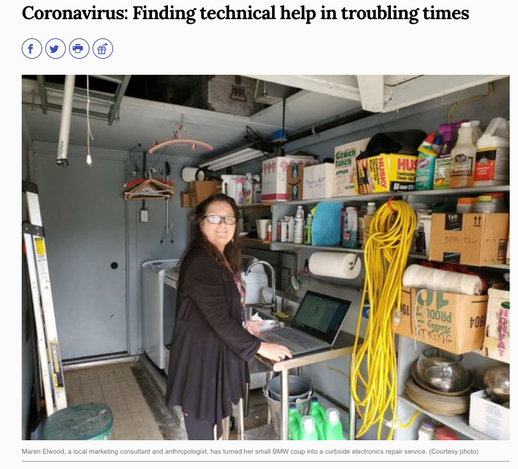 Since 2020's COVID start, I've filled my time with being a tech consultant here in Carmel, CA as people really needed their computers, wifi, and streaming TV to work during a time when we all were isolated at home for a long time due to COVID. Without me really trying, I became known as the Digital Diva and even had a front page article written about me in the Monterey Herald. Thus, unlike many, I have been very busy with this new business during COVID. I've been thankful for the work during the pandemic, but I can't wait to get back to Saqsaywaman and continue my work there as a visual anthropologist. Wish me luck and stay tuned!
0 Comments
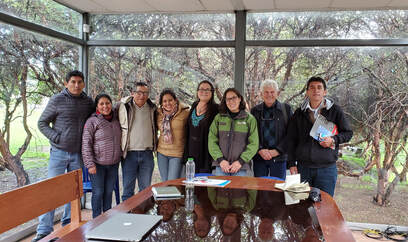 Maren & Peter Frost with the Ministry of Culture staff in 2019. Maren & Peter Frost with the Ministry of Culture staff in 2019. I have not written a blog update about my project in Peru for a very long time. So, I finally thought I'd better update you all on what has transpired since the project had to be put on hold AGAIN due to the worldwide COVID 19 pandemic hit in early 2020. As many of you know, I started my project in Peru at the amazing archaeological site called Saqsaywaman in 2010 and worked there till 2012. Then, due to my own health problems, I didn't return to the site till 2019. That return found us welcomed by both the Ministry of Culture and the five indigenous community that live on the active archaeological site. It was so rewarding to be working there again. 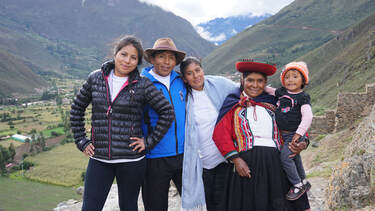 Fernando Sallo and his family on a trip to the Sacred Valley. Fernando Sallo and his family on a trip to the Sacred Valley. In 2019 we touched base with the communities to find out how their efforts to modernize were being received by the Ministry of Culture team. And, much to our chagrin, we found that there was still a huge amount of conflict between the people living on the site and the way the Ministry wanted to limit growth on one of Peru's most important archaeological sites. Thus, we were asked to go into the communities and assess the situation and report back to the Ministry team. Here is a photo of our Quecha guide, Fernando Sallo, with his family at the entrance to the Sacred Valley.  Maren with team members Fiorela Romero Cuentas and Fernando Sallo. Maren with team members Fiorela Romero Cuentas and Fernando Sallo. In 2019 I also decided it was time to flesh out a "local team" of people for this work. I was honored to add author and adventurer Peter Frost to my team along with Fernando Sallo as our Quecha guide/translator. I also found a great young woman to help me with administrative tasks and translation from Spanish to English. Fiorela has been a great help from then on. 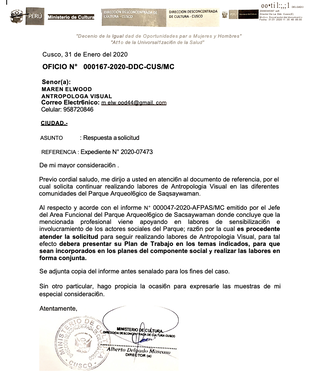 Our permission to work on the Saysaywaman archaeological site is called a "Convenio." Our permission to work on the Saysaywaman archaeological site is called a "Convenio." We were in Peru twice in 2019 and were granted a comprehensive "Convenio" to work on the site by the Central Director of the Cusco area. A great honor. To read about our work in 2019, please scroll down in this blog to the posts from 2019. The Director of the Saqsaywaman Park, Dr. Solis, invited us to work with his team of anthropologists and reach out to the communities to record with our camera their concerns. So, in early 2019 that's what we did. 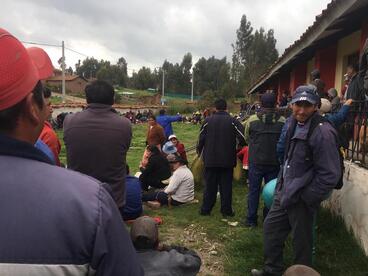 Union meeting of the 5 communities that live on the Saqsaywaman archaeological park in February 2020. Union meeting of the 5 communities that live on the Saqsaywaman archaeological park in February 2020. As we worked in the communities through January 2020, we found that the conflict between the locals and the Ministry was deteriorating fast. Why? Same old problem...the communities want to build houses and infrastructure and the Ministry doesn't want to have building projects on top of sites that might still hold archaeological ruins. The situation with one community in particular was so bad that those local people even refused to work with us. This was very depressing for me as I had worked for years to gain their trust. So, as we entered the first few weeks of February 2020, I found myself trying to figure out what I would do next trip (planned for April/May 2020) to re-establish trust with the community of X. There was a meeting planned for the second week of February of the Union of the communities. I was unable to attend, but Fernando and Fiorella attended and reported in. 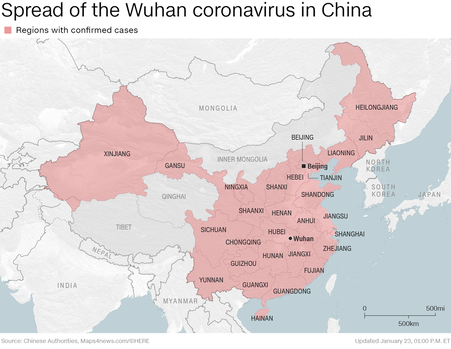 News on CNN in early January was that COVID was primarily in China. News on CNN in early January was that COVID was primarily in China. Early February 2020 I was watching CNN Global one night and heard about this new thing called COVID 19. There didn't seem to be any immediate concern as it seemed it was contained in China. So, I didn't pay much attention. Then, when I arrived at the airport in Cusco to fly to Lima, I was shocked to see most people, especially those from Japan and China, wearing masks. When I arrived in Lima it was clear to me that we had a problem. I walked around the airport in Lima and found a mask. Thus started my flight home where almost all people on the flight from Lima to LA were wearing masks. When I arrived at the International terminal at LAX, almost everyone was wearing masks and talking about the COVID 19 pandemic. 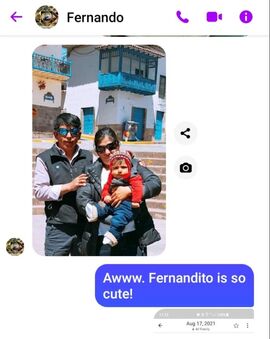 Texting with my team member Fernando Sallo and his wife Vincentina...and their new grandbaby Fernandito! Texting with my team member Fernando Sallo and his wife Vincentina...and their new grandbaby Fernandito! Over the next few months, we all know what happened. I watched in horror as the pandemic spread to the USA and to other countries in just a few months. And, Peru was especially hard it. My trip to Peru in April/May was postponed. But, as the months wore on, it was apparent that my project in Peru was again on HOLD!!! I zoomed with my team in Peru frequently and tried my best to keep up with the situation there. But, both the Ministry of Culture and especially the communities of people who live on the site, don't have good wifi. So, finding out what was going on had to be done via Messenger, WhatsApp and Facebook. Many of the locals have cell phones and spotty wifi. 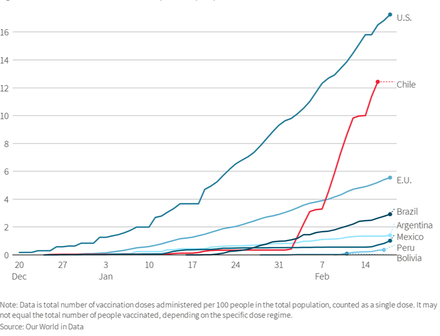 Vaccination stats for Peru don't look that good. Vaccination stats for Peru don't look that good. So here we are in August 2021 and I haven't been to Peru since February 2020! I'm frustrated and feel bad for my friends there in and around Cusco and living on the Saqsaywaman archaeological park. I have heard that COVID 19 has been particularly harsh on Peru, especially in Lima. My friends who live in the various communities have a VERY low vaccination rate as getting a shot is hard in Cusco. My friend and colleague Peter Frost had to fly to Lima from Cusco to get his vaccination. The communities have been hard hit by the almost complete lack of tourism to Cusco. They have compensated by growing even more of their own food and eating a staple potato product called Chuno, a dehydrated potato that keeps for many years. This product is made by harvesting the local potatoes and then stamping on them till they are flat and then drying them. I am concerned what will happen this winter when these local people can't grow in the high Andes. So, what have I been doing to keep my interest in Peru alive during COVID? I've been working on a new project, with my colleague Peter Frost, called IncaTalk.com. We have produced three episodes of this vlog covering several archaeological sites in and around Cusco and the Sacred Valley. We film ourselves via Zoom (as Peter lives in Cusco) and then we add video and stills to bring these sites to life. Check it out here: IncaTalk.com 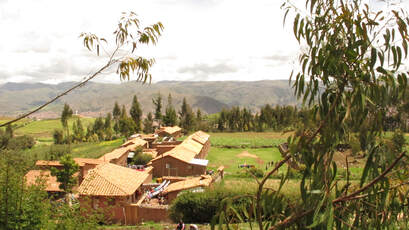 View of the community of Fortaleza, where I hope to build a Center for Visual Anthropology. View of the community of Fortaleza, where I hope to build a Center for Visual Anthropology. I hope to get back to Peru later in 2020, COVID permitting. I turn 65 in December and I'd love to be in Peru for that milestone. I hope to build a Center For Visual Anthropology in the community of Fortaleza on the Saqsaywaman archaeological park. This center will be a place where community members and the people from the Ministry of Culture can meet in a neutral space. I'm going to start fundraising for this project and, if you are interesting learning more, please contact me for details. [email protected] 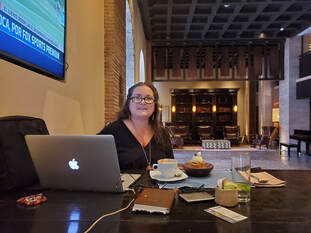 Maren working at the local JW Marriott where there's good wifi and a TV with CNN so I can follow the Impeachment trial. Maren working at the local JW Marriott where there's good wifi and a TV with CNN so I can follow the Impeachment trial. It's the third week here in Peru and I'm just now writing a blog about the project at the Saqsaywaman archaeological park. Why? Because, as usual, it's taken me this long to have the necessary meetings to figure out how to move forward with my work here. This year the negotiations have been especially challenging. In summary, the situation here has become even more challenging than when I arrived in 2010. It's a long story, but I'll try to tell you all about it here. TRUST. I can't escape the juxtaposition of watching the Impeachment trials, that center on the issue of trust on so many levels, and the challenges I'm having here in Peru keeping the trust of the communities that live on the active archaeological site of Saqsaywaman, and maintaining the trust of the Ministry of Culture who is in charge of protecting for the world the amazing site of Saqsaywaman.
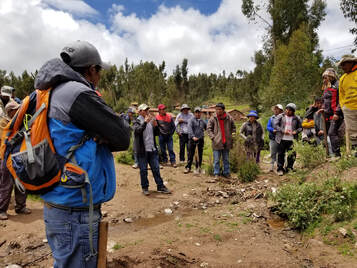 Meeting in Fortaleza about the need to destroy Fernando's bathroom so they can run a power line. Meeting in Fortaleza about the need to destroy Fernando's bathroom so they can run a power line. All that aside, this site still needs to have the latest of archaeological techniques utilized to bring it's history to light. And, that's the main challenge that the Ministry of Culture and the communities living on the site face. HOW DO YOU PRESERVE A WORLD CLASS ARCHEOLOGICAL SITE FOR HUMANITY WHEN PEOPLE LIVE ON THE SITE WHO WANT TO ENTER THE 21ST CENTURY BY BUILDING ROADS AND HOUSES? 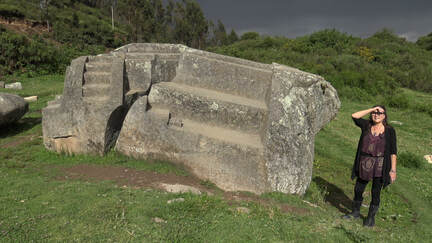 Saiwite megalithic carved stone remains a mystery. Saiwite megalithic carved stone remains a mystery. Without exaggerating, Saqsaywaman, and it's surrounding archaeological sites (some known well and some obscure), have the potential to completely re-write our understanding of human history! I've been visiting some of these less-known sites on my trip this year. BUT...and it's a BIG but, these sites cannot help us understand how the Americas were populated and what role the Americas play in overall human history UNLESS they are preserved. And, that is a big challenge in this amazing country of Peru. Serious archaeological work needs to be conducted. Lidar studies need to be done. Ground penetrating radar needs to be completed. Funds need to be allocated. And, most importantly, communities where these sites live must be encouraged to preserve these sites, instead of building homes and communities that may threaten archaeological ruins. Bottom line, when you live on these sites, it's way too easy to destroy sites in the pursuit of building homes and growing crops. Stones and ruins don't feed families. Unless, artifacts can be sold that you find on your land. COMPLICATED! 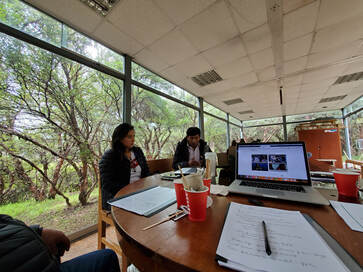 My team members Fiorella Romero and Fernando Sallo working with me to communicate with the communities. My team members Fiorella Romero and Fernando Sallo working with me to communicate with the communities. Now to my work here. In 2010 I arrived in Cusco thinking all I was going to do was film a stakeholders meeting between the Ministry of Culture at Saqsaywaman and the communities that live on the active archaeological site. Well, their trust in each other was so minimal, that the meeting didn't happen. Instead, my team was asked to use our cameras to mediate between the two groups. We've been trying to do that since then. This year, that whole process seems to have completely failed. The communities don't trust the Ministry. And the Ministry don't trust the communities. So many events have happened, over the last 10 years, that have eroded trust between the two groups. And, most concerning to me, THE COMMUNITIES HAVE LOST TRUST IN ME! I can't express how SAD I am about this turn of events. The communities seem to perceive me as someone who is more aligned with the Ministry and the fact that I only show up here periodically doesn't help them build trust in my commitment to their concerns. Bottom line, I have lost the TRUST of the communities that live on the Saqsaywaman archaeological park. And, I will need to find other ways to assist here over 2020. My friend and team member, Fernando Sallo, had a meeting last night with the Union of communities and they basically said they were not willing to move forward working with me without a formal report of my work and reassurances that I have their best interests in mind. I cannot do that with the time I have left here, so I'll have to find another way to move forward. 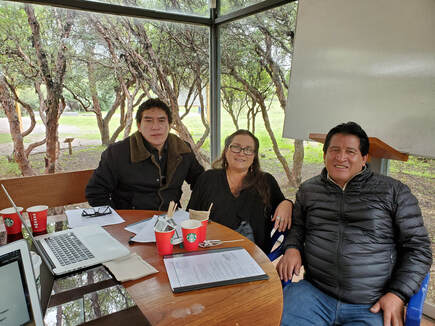 Maren meeting with the Park Director (on Right) Francisco Solis Diaz and the economic director on left. Maren meeting with the Park Director (on Right) Francisco Solis Diaz and the economic director on left. Today, January 24th, I had a meeting with Director Francisco Solis Diaz at the main office at Saqsaywaman. The topic: Goals and objectives for my work in 2020. My team members Fernando Sallo and Fiorella Romero were with me. The meeting was difficult. The Ministry director realizes that the relationship between them and the communities isn't good night now. And, in fact it's at a critical stage. The communities are building without permissions and the Ministry is VERY concerned that archaeological ruins are being damaged or built over. This situation MUST stop and soon! And my ability to mediate between the two groups is non-existence at this point. The park officials and anthropologists don't have the trust of the communities. So, the situation is dire! Stories of inca walls being destroyed and used to build local homes are being told. The archaeological site is threatened. And, the future of the people who live on the site is up in the air. Personally, I fear for each side's safety. 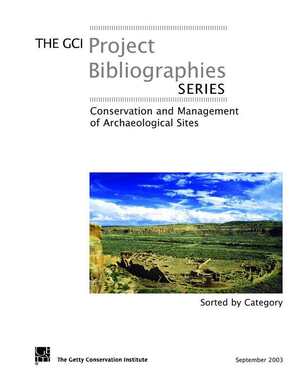 There is a glimmer of hope. The park director has asked that I accomplish two tasks before my next visit to Saqsaywaman in April/May 2020.
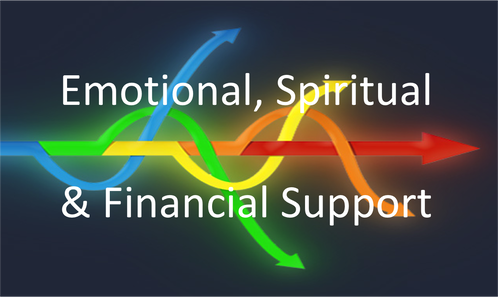 How Can You Help? I'm not really good at asking for help and certainly not suited to admitting that I need help. But, I need HELP! This project is at a sensitive stage and it could continue to move forward or fail all together. I need emotional support, encouragement and words of wisdom and support. I need people to help me believe in myself. In whatever way you can do this is much appreciated. And, I need financial support. I'm hoping this year to get some grants and find a academic partner who can help me with funds to continue my work here and in the USA. I have team members here in Peru to fund. I have equipment and online tools that need to be paid for. I have travel and daily expenses. I have paid all these myself since 2010. Anything you can donate will help me to continue my work here. And, my Andean jewelry sales also help on my site beaditforwardstore.com And, if you want to travel with me to Peru, I have great opportunities to become part of the team and explore this amazing part of Peru. I look forward to hearing from you all in whatever way is best for you. Send me a text, email, Facebook message. Call me on What'sApp. Or connect me to someone you might know who can help me along the way. Abrazos to you all. Maren 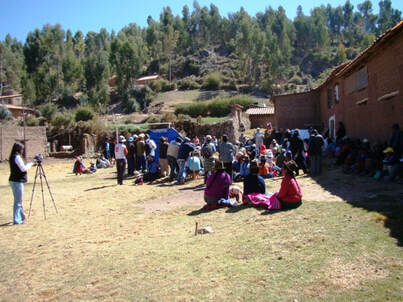 Maren filming a community meeting in Fortaleza in 2010. Maren filming a community meeting in Fortaleza in 2010. In 2010 I was just starting my Master's program at the University of Southern California and had no idea that the film project I decided to pursue, as part of my education in Visual Anthropology, would end up being a 10 year long obsession. Yet, here we are in 2020 and I'm still working on the world UNESCO archaeological site called Saqsaywaman. It's been an honor to work with the Ministry of Culture, the various people who live in the communities of Fortaleza, Pucara and Huayllarqocha. I have grown to love this culture and these amazing descendants of the Inca culture. I have established friendships, professionals relationships, and I've come to know Saqsaywaman and Cusco like I know my beloved California. As we start 2020, I feel such a sense of gratitude for the gift of being able to work at Saqsaywaman. There are so many people to thank, so many doors that have opened, challenges that have been overcome. My heart swells as I think of all the people who have supported me in so many ways.
Just to remind everyone and those new to this blog, these communities live on an active archaeological site, and end up having conflicts about building and modernizing their communities when the Ministry wants to preserve the site for humanity. We have been using our camera to tell their stories and mediate through film. The Ministry recognized us in 2019 for the importance of the work we've done to generating a situation now where conflicts are resolved more easily...most of the time. To read more about our overall research goals, you can see some of the earlier blog posts.
In 2020, I am going to give Fernando a video camera and teach him how to use it so he can become my local cameraman. His daughter also wants to learn filmmaking, so giving them this equipment will enable the whole family to take steps into a new future documenting their community and, possibly, a new revenue stream.
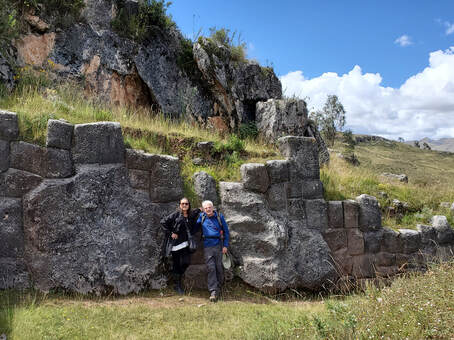 Maren with Peter Frost in front of a stone with 18 sides perfectly fit into a wall above the main Saqsaywaman complex. Maren with Peter Frost in front of a stone with 18 sides perfectly fit into a wall above the main Saqsaywaman complex. Then, much to my surprise, the National Geographic scholar Peter Frost asked to join our team in 2019! Wow, I am so honored to be working with Peter and will be spending quite a bit of time with him in 2020. Over the years many other people (Becky Roth, Erika Roys, Nancy Lutkehaus, and Kara Cooney) have helped me with logistics, translations, and crucial mentoring. And of course John Pollini at USC for his frequent advice and emotional/financial support. John has had me teach a class during one of his courses at USC which has been fun and an invaluable academic experience. And my friends back home in Monterey, Carmel and all over the world deserve a BIG thanks for keeping me believing in my dream to continue working in Peru, especially given health challenges from 2012 to 2018. Can't even thank them all enough...you know who you are. 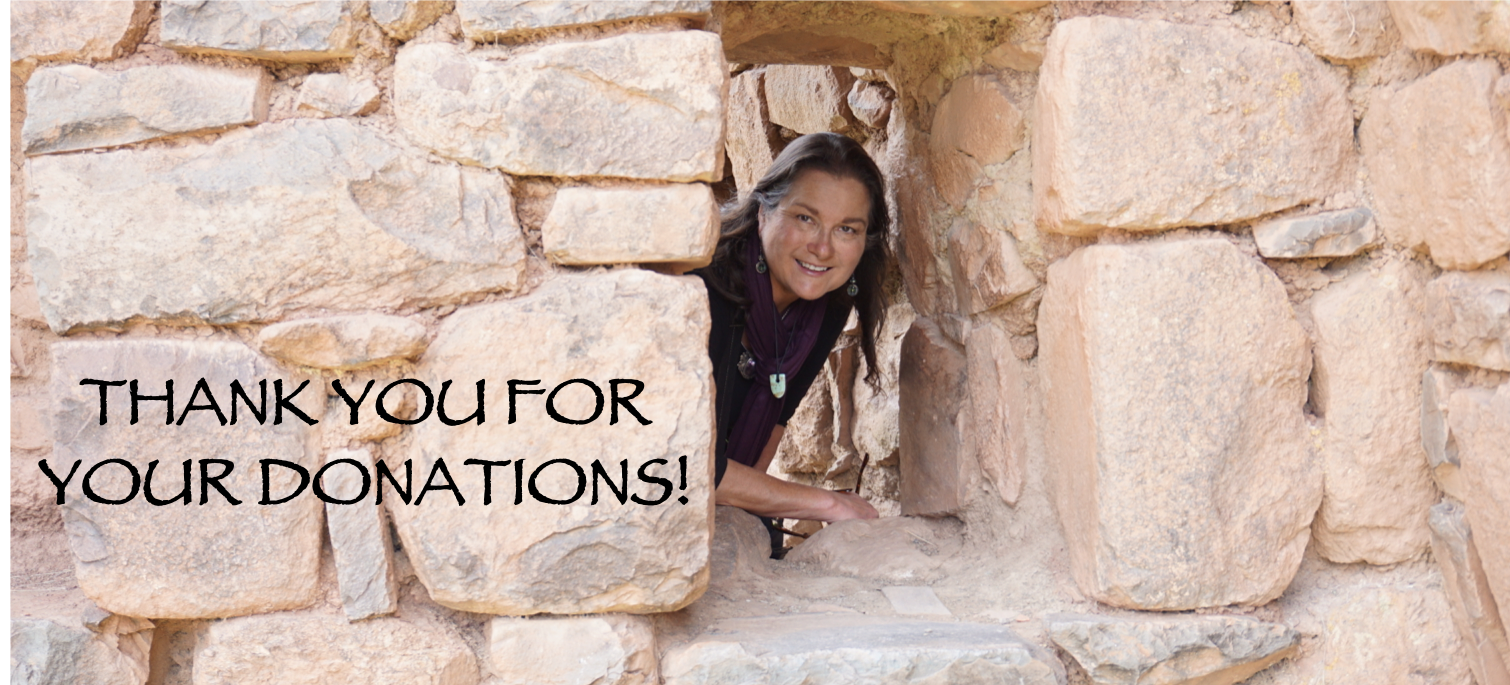 Special recognition goes to ALL the people and organizations who have donated to this project over the years! I've been self-funding this research since 2010 and I could not have done it without the help of friends and colleagues who have contributed along the way. Special thanks to Susie and Charly Franklin and the Franklin Legacy Fund for their support in 2019. And to The Global Purpose Group and Bodhi Garrett for getting us started on getting our non-profit status. That process is now underway and we will have our 501(c)(3) by end of 2020. A list of all our founding donors can be found on our Donations tab. I want to thank each and every one of our donors! We reach our financial goals one donor at a time. 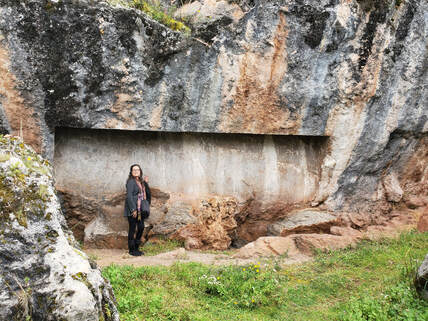 Maren at a unique stone just above the main Saqsaywaman complex. Maren at a unique stone just above the main Saqsaywaman complex. I leave today, January 2nd, to go back to Saqsaywaman for 5 weeks. The goals during this trip are to do several tasks:
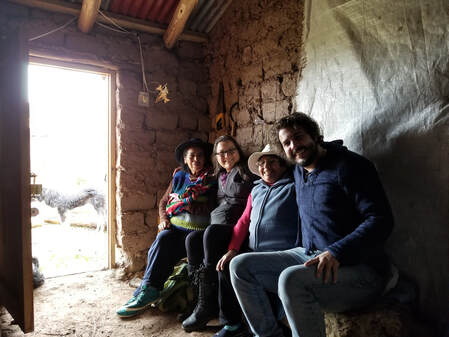 Maren & Dalton with community members of Pucara in their workers shed. Maren & Dalton with community members of Pucara in their workers shed.
Adios! Stay tuned as I'll be posting a blog weekly! 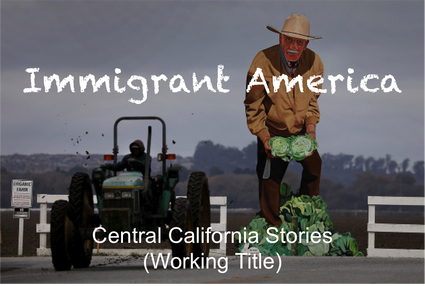 Our working title for the film is "Immigrant America" or "Inmigrante America" as the film will be both in English and Spanish. Our working title for the film is "Immigrant America" or "Inmigrante America" as the film will be both in English and Spanish. NEW NORTH AMERICAN FILM PROJECT FOR ON-SITE EXPEDITIONS As many of you know, we've been busy this year working on our project in Peru. But, once in a while we get the opportunity to work on another project to bring the reality of other groups of Americans to life. We were recently contacted by an organization called the Immigration Task Force to produce a 30 minute documentary to be aired in Spanish and English on Telemundo to help inform immigrant residents of their rights under the U.S. Constitution and the services that are available on the Central Coast to help them protect those rights. As many of you know, recent immigrants, along with long-time resident immigrants, have been demonized by the Trump administration's increasingly inhumane immigration policies.  Many of our film participants have requested we blur their faces to protect them from further harassment from ICE. Many of our film participants have requested we blur their faces to protect them from further harassment from ICE. OUR IMMIGRANT COMMUNITY IS BEING TERRORIZED We've all heard about the ICE raids and how immigrant communities are being threatened, but during this filming we've seen the personal impact of this discriminatory policy by our own government run by Donald Trump for ourselves. Many of our film subjects have requested we blur their faces for fear of being identified, even some who are documented. Parents in particular are afraid of being "sent back" to a country they may or may not know and having to leave their American born children here. The fear these people feel has been palpable during these interviews with these HARD working people who contribute so much to our lifestyles here on the Central Coast of California. Many of these people have teared up and even cried during our interviews. It's been humbling to be able to film these people who are trusting us to ensure their stories are told without being identified. A big THANKS to our film participants who have trusted us with their lives by being filmed!!  Farm workers harvest strawberries in 70 degree heat in the Salinas Valley in early September, and sometimes temperatures reach 90 degrees. Farm workers harvest strawberries in 70 degree heat in the Salinas Valley in early September, and sometimes temperatures reach 90 degrees. IMMIGRANTS ARE AN INTEGRAL PART OF THE CENTRAL COAST ECONOMY Our goal in this documentary is to show how hard our immigrant community works to ensure our local economy, based on agriculture, hospitality and construction, keeps humming along. Few of us realize how BACKBREAKING the work is that our immigrant farm workers do on a daily basis. We have been filming the field workers who harvest our broccoli, artichokes, strawberries and the lettuce that earns our area the name the "Salad Bowl of America." Without the hard work of these people our area would come to a screeching halt! 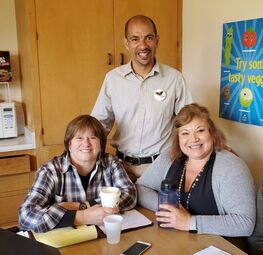 L to R Deb Clifford, co-founder of Immigration Task Force; Ricardo Núñez with the United Farm Workers Foundation; and Paz Padilla with the Catholic Charities of Monterey County. L to R Deb Clifford, co-founder of Immigration Task Force; Ricardo Núñez with the United Farm Workers Foundation; and Paz Padilla with the Catholic Charities of Monterey County. WORKING WITH A TEAM OF PROFESSIONALS FROM IMMIGRATION TASK FORCE, THE UNITED FARM WORKERS FOUNDATION AND THE CATHOLIC CHARITIES OF MONTEREY COUNTY This project is being supported by amazing people who work everyday to help our immigrant community to understand their rights in the face of threats from the Immigration & Customs Enforcement Agency (ICE). Deb Clifford, the co-founder of the Immigration Task Force, has dedicated herself to developing programs to ensure that our local community knows their rights and takes advantage of the services that are available to defend themselves and their families against unlawful treatment. She's also in charge of raising the funds for this film project, which is about half funded at this point. Paz Padilla, with the Immigration Services of Catholic Charities of Monterey County, is also a team member who has dedicated herself to educational workshops and meetings where immigrants can learn about their rights and reach out with questions. Ricardo Núñez, with the United Farm Workers Foundation, is working to ensure farm workers follow in the footsteps of Ceasar Chavez (his personal hero) to get safe working conditions and a fair wage. He's been instrumental in getting us into the fields with farm workers to film what their actual working conditions look like. His personal story of rising up in our community since his immigration years ago shows how diligently immigrants work to achieve their own version of the American Dream. 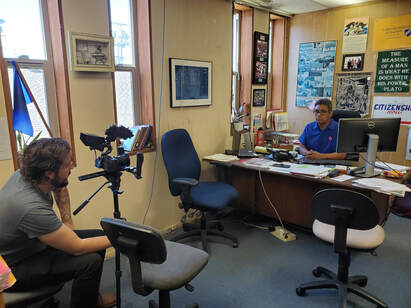 Dalton films Hector Azpilcueta of UNITE HERE, the organization representing the hospitality industry workers. Dalton films Hector Azpilcueta of UNITE HERE, the organization representing the hospitality industry workers. Hector Azpilcueta, Secretary and Treasurer of UNITE HERE (Local 483) is also dedicated to the service and hospitality workers in our Monterey County area to ensure safe working conditions and a living wage. His personal story of rising from working in the fields, then to washing dishes to becoming a citizen and working for UNITE HERE is inspiring. His version of the American Dream is one where immigrants go beyond getting the house and car to one that includes getting the respect that they deserve as hard working Americans. Slideshow of Dalton at working filming the documentary. FILMING A 30 MINUTE DOCUMENTARY IN ONE WEEK We were lucky to get our cinematographer, Dalton Gaudin, to work with us on this project for a VERY reduced fee. However, he only had a couple of weeks open, so we had to film this project over the span of a week. And, now that editing is starting, we hope to have the documentary produced by the end of September. WHAT HAS MAREN BEEN DOING ON THIS PROJECT? Well, I've been the formal "producer" on this project. I keep track of our interview and filming schedule (which has been crazy) and I act as Dalton's sound and camera slave. I also make sure we have releases from all the people we film as this is going to be televised and stations always want releases. And, I've been having fun meeting these great people and seeing how our immigrant communities live and work so VERY HARD! There have been a few people we've interviewed who have two jobs just to make ends meet. I've been exhausted just learning about their lives and trying to keep up with filming their VERY long days. And, I'm in charge of this...the BLOG! And, I've tried all week to get it done only to have to wait because of my need for sleep and the occasional trip to the gym. It's been an exhausting week of filming and my hat is off to Dalton. This week has been harder than just about any filming schedule we've had in Peru. DRONE DAY WITH "HOWARD" This project is the first where we've been able to use our new drone...aptly named "Howard" after Howard Jones who so generously donated the money so we could buy this amazing piece of technology. Dalton bravely piloted "Howard" on our B-Roll drone day and we managed to film many amazing scenes of our hard working migrant workers harvesting strawberries, artichokes, and celery. The drone footage is so COOL! Love this new tool and the documentary film will benefit from the overall perspective the drone gives us on the work these dedicated field workers do in our community. Solidarity Posters All Over The Place INSPIRATIONAL POSTERS AND SAYINGS EVERYWHERE One of my favorite things to do when we are filming is to document the "artifacts" in people's spaces. This filming project has given me the chance to take photos of some amazing walls of posters in people's offices, homes and organizations. The common theme is solidarity with the migrant community and the desire to be treated with respect. Here are a few of my favorites that run from a wood print of a strawberry picker to the wall in the Unite Here founder's office with a "demon Trump" at the top of the wall.  DONATIONS ARE ALWAYS WELCOME As with all our projects here at On-Site Expeditions, we are dependent upon donations. This project can be supported by donating to the Immigration Task Force by sending your tax-deductible donation to: Action Council of Monterey County P.O. Box 902 Monterey, CA 93942 In the memo line, be sure to write "Immigration Task Force / Video Project" so your donation is properly credited. Or, to donate online, please go to their website https://itfmontereycounty.org/donate/#MovetheNeedle and click Donations to make your contribution. We hope to have the finished film out by end of September. Please subscribe to our blog to receive a notice when the film is out. It will be on our website, on the Immigration Task Force website and their YouTube channel. Special thanks to those who have already donated to this project. A full list of those people will be provided on the Immigration Task Force website in a few weeks.
My research study partner, and the amazing filmmaker on this project Dalton Gaudin, contacted me last week with the news of Paola's passing. It hit me hard...halted my busy day...caused me to tear up...and FEEL. I pulled over, stopped driving and wept over the loss of this valued elder member of the community of Fortaleza. Her departure from our beloved Mother Earth leaves a hole in the history of the Andean people. And, it leaves a hole in my soul. Paola lived 95 precious years. When we interviewed her she told us of her hard life. Hearing her then was emotional, yet rewarding to know that we were documenting the life of this elder in the Andean world. Today, I feel emotionally raw and compelled to honor this Andean woman in the best way I can...writing a blog...sharing photos of her and using the tools of a visual anthropologist to share a very human story from another culture. 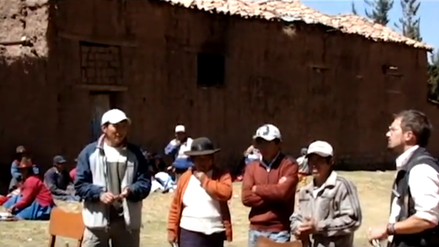 I believe that Paola is one of the women sitting in the background of this photo taken in Fortaleza in 2011. I believe that Paola is one of the women sitting in the background of this photo taken in Fortaleza in 2011. In 2010, when this research project on the archaeological site of Saqsaywaman started, I met Paula Quispe Ramos during a meeting in the community of Fortaleza. I didn't know who she was. I didn't know who her family was. I just saw a weathered woman in traditional costume sitting on a log and watching a meeting about relations with the Ministry of Culture. She was regal wearing her "traditional Chinchero hat." Over the subsequent years, when we were in Peru again, I always wanted to know more about her. I saw her many times over the years. I remembering seeing her walking on the steep road to her home from the archaeological site. She always looked so strong, so Andean. She also looked very tired. Another time I remember seeing her at the Saqsaywaman park sitting on a small chair selling her wares to tourists. It was hot and I knew she had to walk both down to the site in the morning and back up the hills at night. She was as strong as the stones at Saqsaywaman and just as enigmatic. 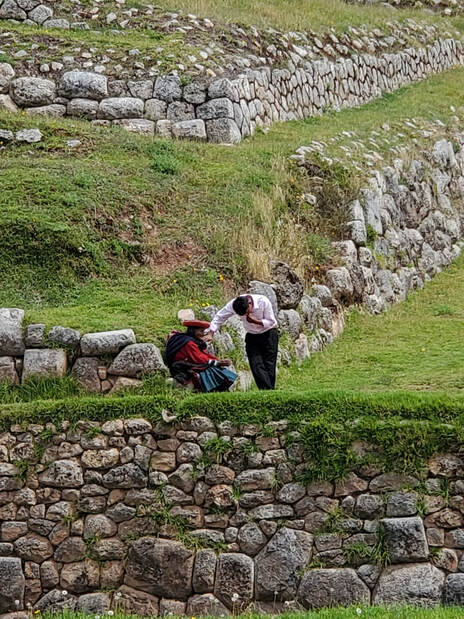 Paola sitting on her little chair at her "spot" on the Saqsaywaman archaeological site in 2019. Her grandson Fernando is talking to her about participating in our research. Paola sitting on her little chair at her "spot" on the Saqsaywaman archaeological site in 2019. Her grandson Fernando is talking to her about participating in our research. Fast forward to 2019 when I returned to Saqsaywaman and the community of Fortaleza to try and regain the trust of this local community. It was helpful to have Fernando Sallo, our guide and our Quecha translator, paving the way to other communities on the archaeological site. When we talked with him about interviewing elders, he told us of a 95 year old woman, his wife's grandmother, who might participate. When we prepared to interview Paola Quispe Ramos, I had no idea she was the same regal woman I had admired throughout the years. This strong-as-stone woman shared her history of growing up in the neighboring village of Chinchero. She told us of her marriage to a man who lived miles away in the village of Fortaleza. And of her having 6 children. She wept as she recounted that only two of her children are still alive. And, she lamented the loss of her husband many years ago, which left her to survive alone. Our ability to document her oral history at Saqsaywaman was a gift to our research. Hearing her life story was one of those moments that I will cherish forever. The interview was done in her native Quecha language with Fernando translating into Spanish. Dalton translated from Spanish to English for me. It was an amazing cross-cultural experience with a tiny, powerful Andean woman whose life was lived on one of the Peru's most historically important archaeological sites. My previous blog tells her touching life story. You can read it below. What's new since my last blog and so relevant now, is that we were able (during the last days of our trip in April/May), to obtain a DNA sample from Paola. It was stunning to find out she was even interested in participating in our DNA study given how alien this new technology must have been to her. However, once her grandson Fernando explained the process and expected outcome, she agreed to participate and sit, spit into a tube, and give us many personal details. Perhaps one of the reasons she wanted to participate was that she believed, from her own family oral history, that one of her grandmothers had a child by a Spanish invader. She wondered how much that had impacted her own family DNA. DNA data from the Andean region of South America is few and far between. It was a huge accomplishment to add her to the DNA database for Peru. The results of that DNA test came back in June and, much to her surprise and delight, showed that Paola Quispe Ramos was 99% Andean. We let Fernando know and heard that she was pleased to know her family roots. The fact that we were able to do this test before her passing gives me such a sense of wonder and appreciation for the research we are conducting. And now I am even more committed to adding more DNA research with other community elders who live on the Saqsaywaman archaeological park. 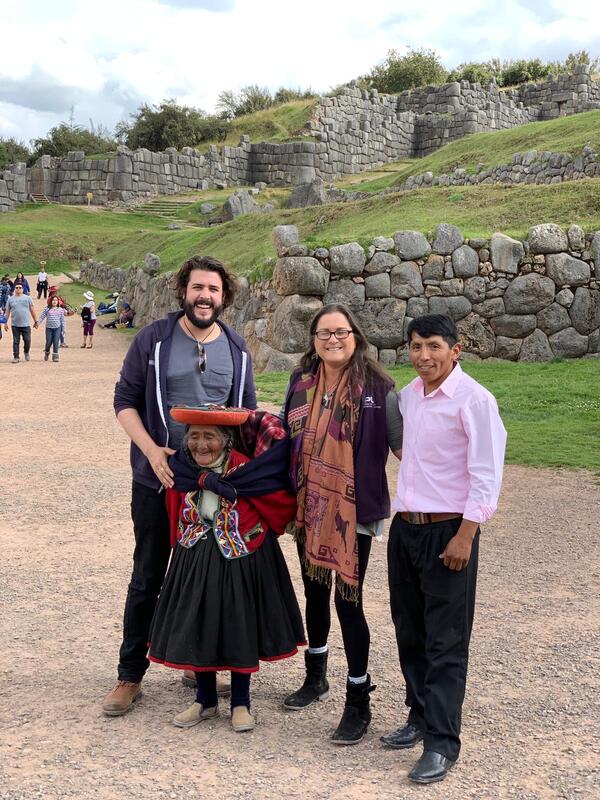 From Left to Right; Dalton Gaudin, Paola Quispe Ramos, Maren Elwood & Paola's grandson by marriage Fernando Sallo. From Left to Right; Dalton Gaudin, Paola Quispe Ramos, Maren Elwood & Paola's grandson by marriage Fernando Sallo. There are times, as a visual anthropologist, when the work goes beyond the raw documentation of a culture and its people. The ability to touch hearts and make a difference in someone's life, is rare. Paola Quispe Ramos reminds me why I do this work and gives me the stamina to continue to find ways to continue with this research. Telling people's stories from Peru is what I live for. And, today, being able to share some of Paola's story gives me such joy that I can hardly contain my excitement. I grieve for Paola and her family. But I also know she lived a full, meaningful life that will live on now that we have documented it with photo, film and the Almighty word. Thanks to all the community members in Fortaleza who made it possible for us to know Paola. We look forward to continuing more elder interviews in all the communities that live on the Saqsaywaman site. Paola...may you rest in the warm embrace of Mother Earth...and tend your flocks in the Andean universe. 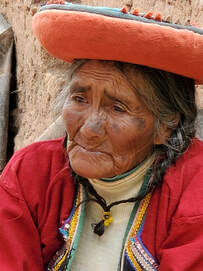 Paula Quespi, a 95 year old elder in the community of Fortaleza. Paula Quespi, a 95 year old elder in the community of Fortaleza. Spring 2019 April/May Trip to Saqsaywaman, Peru Our second trip of 2019 is at the mid-point and I'm just now getting around to writing my first blog. Why? We've been slammed doing interviews and filming both with the Ministry of Culture heritage professionals who manage the archaeological park at Saqsaywaman in Peru. And, we've also been filming community people and elders about their lives on an active archaeological site. Up to this year, we have focused on documenting the conflict between the Ministry and the communities, which at this point is well documented. So, this year we move on to telling the stories of the amazing people, most of them indigenous Quecha, and filming their stories for posterity. We are focused on both oral history with community elders and the most recent archaeological research to bring the complexity of this site to the world's attention. 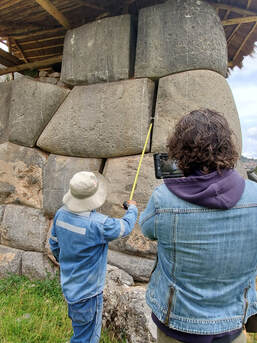 Welcomed As Fellow Site Professionals & Documenting Preservation Work At Saqsaywaman During our first few days on the site this time we were greeted with open arms by the park officials. Unlike last time when it took us 4 weeks to secure our "convenio" (the permission we need to work on the site) and we had to scramble to establish trust with the park officials again, this time we were greeted as team members. It was so gratifying and humbling to be welcomed on the site as fellow heritage professionals! And, out we went onto the field to do interviews and film the park official's preservation efforts and the most recent archaeological research findings. We happened to be here just as the annual "cleaning of the stones" was underway. We had the opportunity to tour the main walls of the main Saqsaywaman complex with restoration specialist Luis Gonzalo Camino Mamani (pictured here). His work to ensure the megalithic stones in the wall stay put through the ravages of time, weather and tourist activity is critical to ensuring this site is around for our grandchildren...and their children. This day, they were clearing weeds, which, if not removed, have the potential to destabilize the walls' foundations.  Samuel Kjura Arenas being interviewed by Dalton Gaudin in front of the Suchuna (volcanic rock outcrop opposite the main Saqsaywaman zig zag wall) about the latest biological research being done at the park Samuel Kjura Arenas being interviewed by Dalton Gaudin in front of the Suchuna (volcanic rock outcrop opposite the main Saqsaywaman zig zag wall) about the latest biological research being done at the park Latest Archaeological Research & The Need For More Field Work We had two interviews with park officials during our first week about the latest archaeological findings and theories at Saqsaywaman. Interview #1) Samuel Kjura Arenas, the head park biologist, took us to the Suchuna (a volcanic stone outcrop opposite of the main walls of Saqsaywaman) to talk to us about the biological diversity of the park and how the local communities are being encouraged to grow indigenous crops. Samuel also touched on the excavation work that still has to be done to determine if the walls continue under the current dirt level. He encouraged us to talk with the park director about this work. 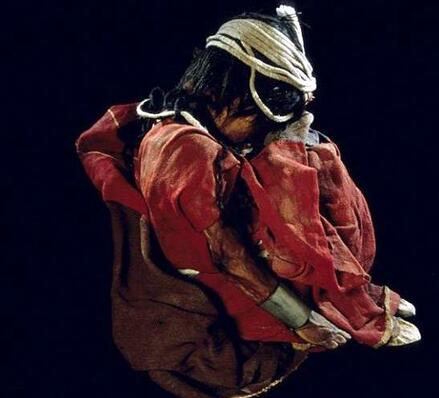 We are still waiting to film the actual female Inca warrior mummies that were discovered at Saqsaywaman, but they most likely looked something like this one. Wrapped in traditional textiles and bundled in a fetal position. We are still waiting to film the actual female Inca warrior mummies that were discovered at Saqsaywaman, but they most likely looked something like this one. Wrapped in traditional textiles and bundled in a fetal position. Interview #2) Francisco Solis Diaz / Saqsaywaman Park Director We were so very honored to be able to conduct quite an extensive interview with the park director about his current research into the discovery of 13 Incan female warrior mummies. They were found in a park of the park that is pretty remote to the normal tourist track. He is in the process of finishing a comprehensive research paper about the discovery and we hope to produce a film for him to accompany his release of his findings in September of 2019. He took us on a tour of the sacred caves on the site that were special places of ceremony for the Inca. There is speculation that the mummies were wrapped in the traditional "textile bundle" and placed during special occasions in the traditional trapazoid and square/rectangle niches that are common in and around the cave complex here at Saqsaywaman.  Photo of Francisco Guillen and his wife after the interview with Maren Elwood and Dalton Gaudin. Photo of Francisco Guillen and his wife after the interview with Maren Elwood and Dalton Gaudin. Oral History Rocks! After our initial interviews with the park officials, we decided to focus on recording oral history from community elders. Time is always a factor in making sure we document for posterity the lives, myths and history of local people. In the community of Fortaleza, the one closest to the main park complex, our informant Fernando Sallo managed to get us two interviews with people who've lived on the site since the 50's. These interviews were an ethnographer's dream...to be able to record what life was like for these people in their native tongue Quecha...with the translation help of Fernando. Interview with Francisco Guillen / Age 85 / Resident of Fortaleza Since 1950's Francisco lives in the original hacienda where Fernando's family grew up. He currently grows fava beans and raises cattle and chickens. He was a bit resistant at first to do an interview with us, because he thought we were from the Ministry, but after talking with Fernando for a while, he realized the value of getting his history documented for future generations. His life here has been hard and he currently lives with his wife in this modest home. He related to us his family "legends" about the building of Saqsaywaman's megalithic walls. The story goes that giants constructed the walls of Saqsaywaman with the help of inter-dimensional beings. He couldn't possibly fathom the idea that the Inca had built Saqsaywaman or moved such giant stones. This legend is common here among the elders. Francisco, the park director, assures us, however, that the Inca built these walls - possibly through conquest and the expropriation of other local tribes' masonry knowledge. 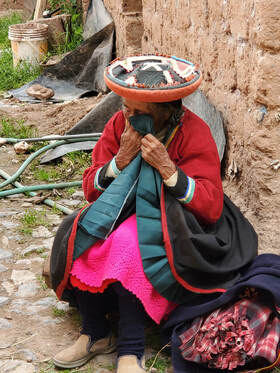 Paula Quispe wipes tears with her petticoat as she tells us of her loss of family members over her 95 years. Paula Quispe wipes tears with her petticoat as she tells us of her loss of family members over her 95 years. Interview with Paula Quespi / Age 95 / Resident of Fortaleza Since ~1950 We were so fortunate and honored to be able to spend some time with the eldest member of Fortaleza - Paula Quespi. She is 95 years old and spent over an hour with us talking about her personal history on the site, all the way back to the 1950's, when she moved to this land to join her husband. She has had 5 children and recalled with much sorrow how she had buried her husband and 3 children. It was so touching to hear stories about her life and family. It was an honor to capture her story on video. She is a valued member of Fernando Sallo's family - their grandmother or "Abuelita". Paula walks down to Saqsaywaman every day to take photos with the tourists. This is how she contributes to her family and community. She recanted the various epochs on Fortaleza during her lifetime - from the hacienda days where she and her family were basically feudal serfs for local landowners, to the agrarian reform of the 1970's, up to the current tourist era. The impact of the 21st century on these campesino communities is evident. Change is rapid and local customs are being lost to time. We asked Paula about this - her only lament was that she couldn't spend more time roaming the hills were her animals. 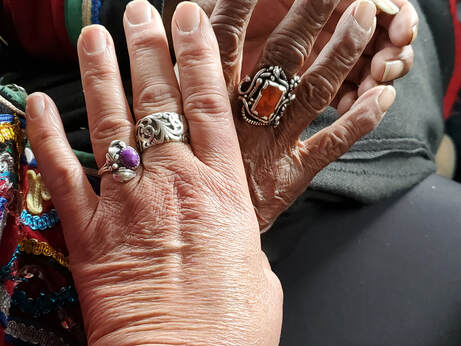 My hand on top of Paula's hand...as she tried on each of my rings. She selected the small ring on the extreme left with the leaves in silver and the purple turquoise stone. I was honored to give it to her. My hand on top of Paula's hand...as she tried on each of my rings. She selected the small ring on the extreme left with the leaves in silver and the purple turquoise stone. I was honored to give it to her. Pagos - Payment To Pachamama & To Our Informants It's always a little tricky figuring out how to compensate our informants. We are not allowed to pay the Ministry of Culture professionals and they are more than happy to work with us just for the sake of spreading the word about Saqsaywaman and their work as heritage professionals. But spending time with the community members is another matter. Interview First - Donate After Our approach is to secure interviews first and then make a donation to the community and/or person after. In this way, we don't feel like the only reason people talk with us is for the financial gain. And, we find that once people understand the benefit of getting their life experience on film for posterity, they are happy to do the interview even before they realize we are going to pay them for their time. All that said, there are times when informants want something else from us. And, our interview with Paula Quespi was one of those instances. As we were taking her back down to Saqsaywaman, she sat in the back of the car with me and started admiring the various silver rings I had on. Her eyes lit up with desire and I was happy to give her one of my pieces. These "trades" have happened before, with people either wanting something as simple as a piece of clothing or maybe even a scarf. Most of the times, they seem to covet pieces that come from the United States.... the park officials keep asking Dalton for his camera! Paula selected a small ring I had just purchased in Carmel - with a leaf pattern and a rare purple turquoise stone. She was delighted to have a piece of jewelry to remind her of our time together - and that it was from California, too! Her granddaughter joked that she was going to wait until her Abuelita was asleep - in order to slip it off her finger and keep it for herself. Next time I'm down here, I'm going to bring more jewelry from California to give to these amazing people. I usually buy jewelry here in Cusco to sell to my friends in the US... Next time, the trade will be cross cultural. 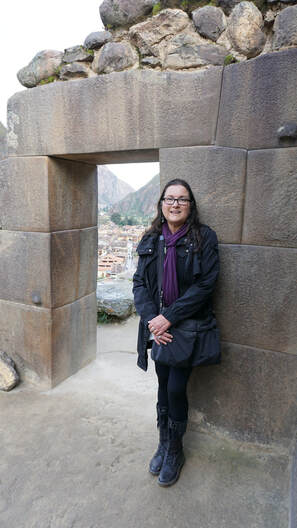 Maren at one of the megalithic doorways that is almost at the top of Ollantaytambo, an archaeological site in the Sacred Valley of Peru. Maren at one of the megalithic doorways that is almost at the top of Ollantaytambo, an archaeological site in the Sacred Valley of Peru. I've been home from Peru for a bit over a month and have recovered from an amazingly successful research trip and a challenging physical experience. The good news is that now I know I can handle the altitude and that my body is in shape to deal with the physical rigors of climbing archaeological sites at between 12,000 to 14,000' above sea level. Thanks to all who have followed my journey and for tuning in once again. The most immediate piece of information I want to share with you all is that I'm going to be giving an informational talk about my project entitled: "The Mystery of the Stones." Date: March 24th Time: 2-4pm Place: Center For Spiritual Awakening 522 Central Avenue Pacific Grove, CA 93950 Most of you know that the research I'm conducting is focused on the relationship between the people who live on the active archaeological site of Saqsaywaman and the people who manage the site at the Ministry of Culture. But, what many of you may not know is the BIGGER reason why I feel it is important to preserve sites like Saqsaywaman. This talk is going to talk about why it's important that archaeological sites around the world are preserved for posterity. The Amazing Stones In Peru
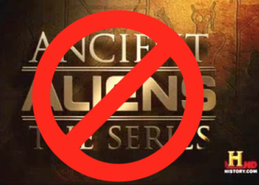 One development that has drastically improved the ability to study our human history is the Internet. With the ability to share academic research and post photo archives of various archaeological sites around the world, everyone (both academics and lay people) can read about and see human cultural artifacts and stone structures around the world with minimal effort. The downside of this is that some people are all too quick to jump to conclusions. It personally drives me crazy when the people who appear on the Ancient Alien shows attribute anything they don't understand immediately conclude it must have been aliens! The benefit of the increased access to archaeological studies and photo archives is that people who are serious about trying to find out "who" built these sites now have a global perspective.
 The Younger Dryas cold interval as viewed from central Greenland. From: Quaternary Science Reviews Volume 19, Issues 1-5, 1 January 2000, Richard B. Alley The Younger Dryas cold interval as viewed from central Greenland. From: Quaternary Science Reviews Volume 19, Issues 1-5, 1 January 2000, Richard B. Alley Long held beliefs are often vehemently defended in the face of new technology and scientific discoveries. Galileo was persecuted for proposing the Earth was not the center of the Universe. It took a long time for people to accept that the Earth is round. Recent science is now proving that the many cultural flood myths do have some basis in fact as there is evidence of a worldwide cataclysm around 12,800 years ago. Ice core data shows that this cataclysm plunged our planet into a deep freeze called the Younger Dryas just as we were coming out of the last Ice Age. Makes you wonder what else we currently believe will be overturned by the many new technologies that are peering into our past. 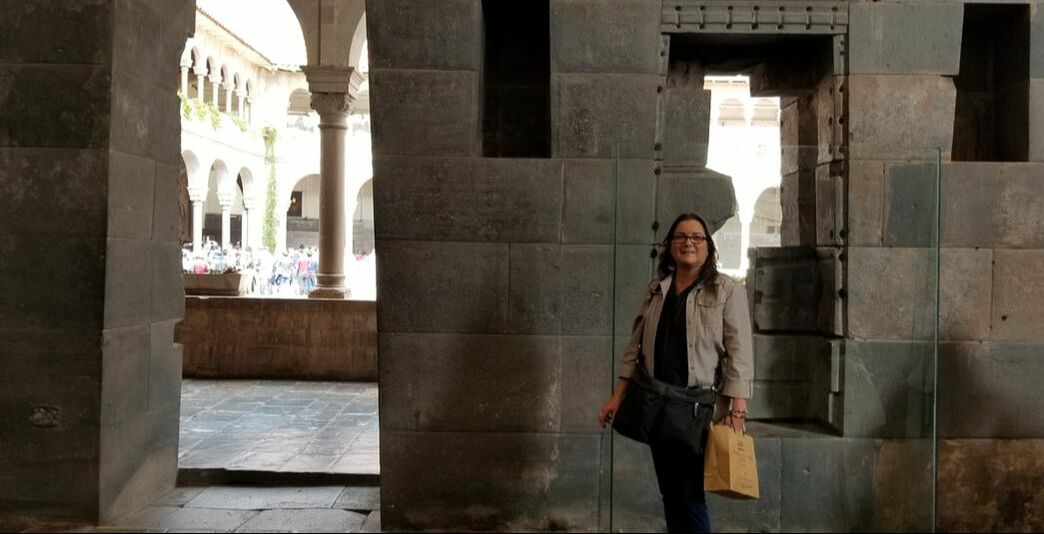 Maren at the Qorikancha "Temple of the Sun" in Cusco, a UNESCO World Heritage Site. Maren at the Qorikancha "Temple of the Sun" in Cusco, a UNESCO World Heritage Site. There's a reason UNESCO designates archaeological sites as important to preserve for humanity. You can't study what doesn't exist. Looting, weathering, destruction by war (as was done by ISIS recently at the ancient site of Palmyra in Syria), wear and tear by well-meaning tourists are just some of the ways we loose our human heritage. We MUST preserve these sites if we are to understand our human history, and there's no where this is more important than in the Americas. I've often told people that archaeological research in South America is akin to where explorers found themselves in Egypt 100 years ago. There is still so much to be dug up and understood. And, all you have to do it take a journey to the Sacred Valley and see sites like Ollantaytambo, Pisac and Machu Picchu to understand that work is still to be done to understand the "who" question. And, then "when" question. 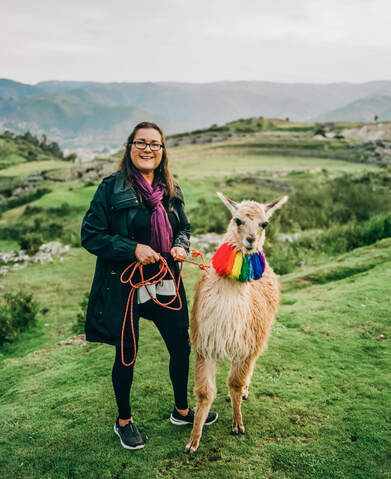 You Are Invited To The Talk - And If You'd Like To Continue The Conversation, We'll Be Having Dinner at Fandango Restaurant in Pacific Grove. We will explore the various sites in Peru and their parallel sites around the world during my talk on March 24th. Hope you can join me. No need to RSVP to the talk, but if you'd like to join a few of us at the dinner (everyone will pay for themselves) at Fandango from 5-6pm, please call me at 831 238 5503 or email me at [email protected]. 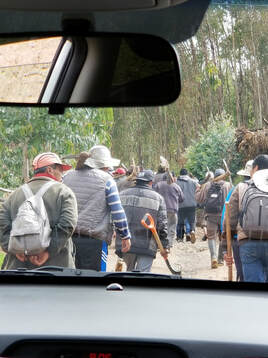 View of the whole community walking up the hill for the meeting with tools in hand. View of the whole community walking up the hill for the meeting with tools in hand. Sunday, February 3rd 7AM I'm up early once again to get ready for a big community meeting in the community of Fortaleza...the community that is the closest to the main Saqsaywaman complex. We've been working closely with the past President of this community, Fernando Sallo, since we arrived to tell his story. Today, we meet with the whole community to show them our film Stone & People, and hopefully gain their trust so we can continue to work with this group. Dalton Gaudin and I worked hard to re-edit the film to put in Spanish subtitles and make it a little shorter. Today will be the test to see if our work in the past justifies to this cohesive community our continued presence amongst them. Given the less-than-enthusiastic reception we've had in the other two communities, I'm up early this morning not because my alarm went off. I'm nervous. As we drove up, we found ourselves behind what seemed like the WHOLE community with picks, shovels and machetes marching as a work crew up the hill for their meeting and then our screening. I'm struck with how every able bodied man and woman has turned out on this rainy Sunday morning.
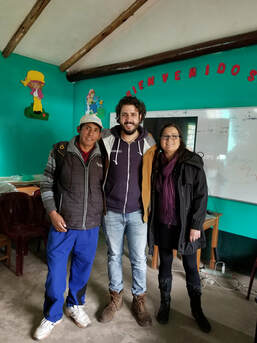 After the screening, Adrian Sallo poses with Dalton and Maren before we all head off to the work party. After the screening, Adrian Sallo poses with Dalton and Maren before we all head off to the work party. 9:30 - 10AM Screening After a brief introduction to the film by Dalton Gaudin, we decided to show the entire film. We were tempted to skip some of the history in the beginning of the film, but it turned out that the whole group of 75 people were totally focused during the entire movie. There were even period of laughter as they recognized Adrian Sallo in one scene and Fernando in another. As a whole, this community seemed to really appreciate what we had done in 2010 to 2012 and understood the value of film to communicating their situation as living culture on an active archaeological site. A brief question and answer period followed the screening with some really good questions being raised. We were thanked for our work and we were welcomed to continue our work starting with covering today's work party. They are also really interested in us coming back for the March 1st community festival; an event they feel will give us a good sense of what all the communities do as a whole to honor traditions and rituals. 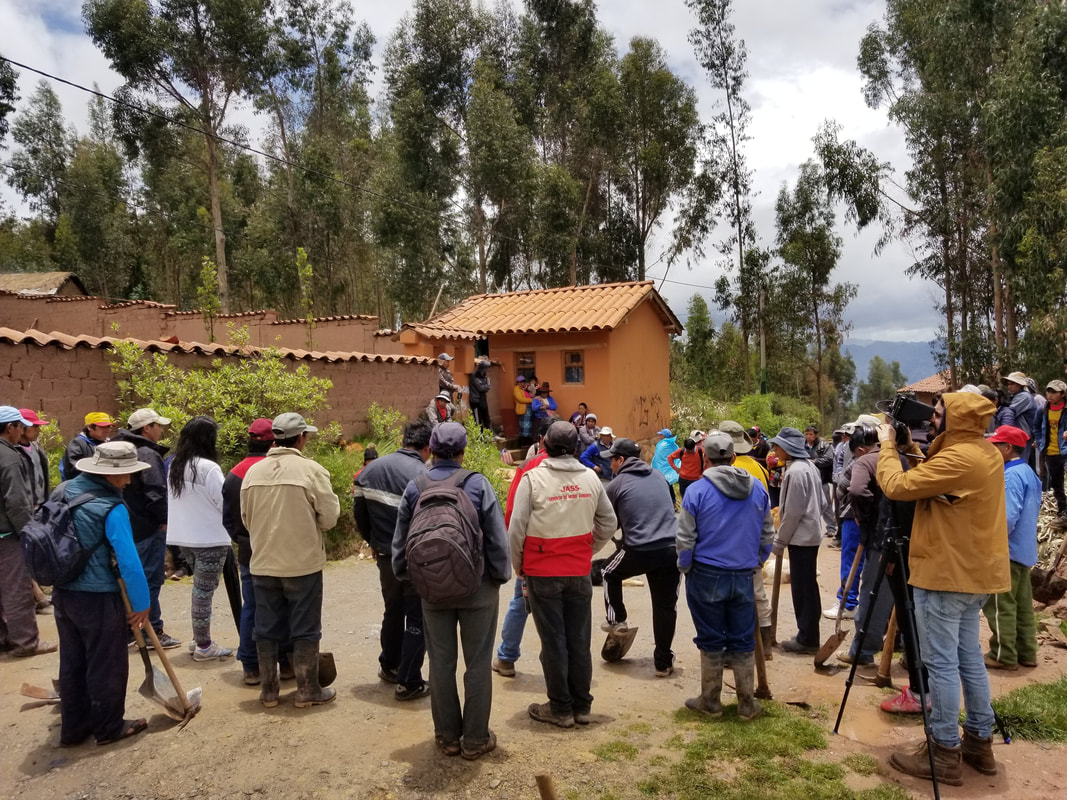 Dalton films the second community meeting outside Fernando's house where they all weigh in on how best to run the power line. This meeting is a good example of the concept of Ayni. Dalton films the second community meeting outside Fernando's house where they all weigh in on how best to run the power line. This meeting is a good example of the concept of Ayni. 10:30AM - 3:50PM Community Negotiations About Running New Power Line Running power to these communities is always a challenge, but today's job poses a unique problem. The power line needs to be run right through the front yard and already constructed bathroom house of Fernando Sallo. As is the custom when there's a disagreement in a community, ALL the members get together and discuss. So, they all meet outside the fence of Fernando's house and everyone weighs in about how to go about running the line with the least disruption to Fernando's property. Bottom line, some type of destruction must be done on Fernando's property, but I'm impressed with how they all try their best to find a solution that will be good for all. This attitude about working as a community was explained to us by Fernando as coming down from ancient Inca times and described as a system of Ayni, Minka & Mita. Ayni: It was a system of work of family reciprocity between the members of the ayllu, destined to agricultural works and to the constructions of houses. The ayni consisted in the help of work that a group of people did to members of a family, with the condition that it corresponded in the same way when they needed it, as they say: "today for you, tomorrow for me" and in return They served food and drink during the days the work was done. This tradition continues in many peasant communities of Peru, helping in the work of cooking, herding and housing construction.
Mink'a: The minca, minka, or minga, is the community work that was carried out in works in favor of the ayllu and the Sun (Inti), a tax in work and in turn, that had as beneficiary to the State, where many families attended carrying their own tools and food. The families participated in the construction of premises, irrigation canals, forts, mines, cultivation of state lands, as well as assistance in the fields of the disabled, orphans and the elderly. Overall, the community good takes precedent over an individual's sole benefit.
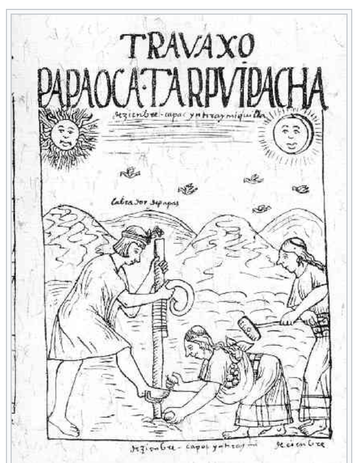 Travaxo "A System of Work" was outlined in (1615/1616), by Felipe Guamán Poma de Ayala, in his chronical of Incan life. Travaxo "A System of Work" was outlined in (1615/1616), by Felipe Guamán Poma de Ayala, in his chronical of Incan life. Can The Andean Philosophy of Ayni, Mink'a & Mita Play A Role In The Conflict With The Ministry of Culture? Over the last few weeks of interviews with the various communities, it has occurred to both Dalton and myself that the process of community involvement in ANY decision is NOT being practiced by the Ministry in dealing with the communities. It seems, and we will confirm this this week when we talk with the park director, that the relationship the Ministry has with the communities DOES NOT follow the ancient practice of Ayni, Mink'a & Mita. Why isn't this amazing group philosophy used by the Ministry? We will seek to find out. In the meantime, understanding the last of the concepts is appropriate. Mita may hold the key. Mita: The mita was a system of work in favor of the Imperial State of Tahuantinsuyu, where crowds of people were mobilized to work in turn in the construction of roads, bridges, fortresses, administrative centers, temples, aqueducts, mining, etc. There was a mita for special services such as the work of Sapa Inca freighters, musicians, chasquis and dancers, those forced to perform this task were married men adults, but not women, whose age was between 18 and 50 years. So, the question is: Is there a role for this type of intimate collaboration for the benefit of the State/Ministry of Culture in the name of preservation of this amazing archaeological site known as Saqsaywaman? A site that is also known as HOME to these people who represent living culture that is just as important as the stones left by their ancestors? It is these questions we walk away from today with and hope to get answered later this week in our meetings with the Ministry of Culture professionals. Because, they too are Quecha community members and, as such, would benefit from the ability to have the in-depth negotiations about site preservation just like this community had hard conversations today about removing Fernando's wall.
We were rewarded today with some cute moments with animals and beautiful plants. At the end of a rewarding but long day, seeing a beautiful hummingbird, a cute doggie and a beautiful plant I've never seen before were rewards that were much appreciated.
 Do you ever have a day where you feel like you did so much you have to write it down so you remember that you were capable of such a day. Well today was one of those. Here's the list and the photos to support the story. 6:30am Up Early To Get Ready For The Day Those of you who know me know that this is REALLY early!!! 6:38am Phone Call From Adrian Sello Took early morning phone call to confirm that we will be at Fortaleza this Sunday at 9am to present our "Stone & People" film to the community. 8:30am Starbucks Joined by my friend and study participant Fernando Sallo to go to Starbucks (yes, they have one here) to get coffee and donuts for the meeting at Saqsaywaman. Used handrails to get up the steep stairs and ended up with a chemical burn on both hands that required I take off both rings before they had to be cut off. This lasted about 4 hours. Could hardly type during the meeting. 9:30am Back to flat to pick up Dalton Gaudin who is finally feeling better and get our camera/computer gear into the car. Up the hill to Saqsaywaman. 10am Meeting with Saqsaywaman park Director Francisco Solis Diaz and the 4 park anthropologists. We've been waiting for his time to sit with these heritage professionals and discuss the Plan Maestro for the park and discuss the situations in each of the archaeological zones. It was an eye opening meeting. It's taken us three prior meetings to gain the trust of these people and today it really paid off. We were treated to a VERY frank discussion of what's working, what's not working and how we can help. Frankly, I was almost to the point of thinking that our work wasn't valued here. But, quite the contrary. The park director made it clear that they value our contribution as non-partisan anthropologists who can get into the communities whereas they are having difficulty gaining access. Thanks to Dalton, we were able to identify which communities they really need our help with. Given that we only have about 10 days left here, we decided to focus on two of the three communities we have been in prior, Fortaleza and Huayllarquocha. 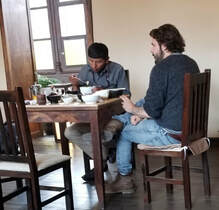 1:00pm Sushi Lunch To Regroup We have spent the last few days with Fernando Sello, a resident of Fortaleza and now a the owner of a great tour company. He has a great vehicle and he's been driving us around and helping us understand the political situation at the various communities. More on him and Fortaleza later. Today, after our park meeting, we went to our favorite sushi bar, Kintaro, for lunch. It was Fernando's first sushi experience. We tried to teach him the art of the chop stix...didn't go too well. 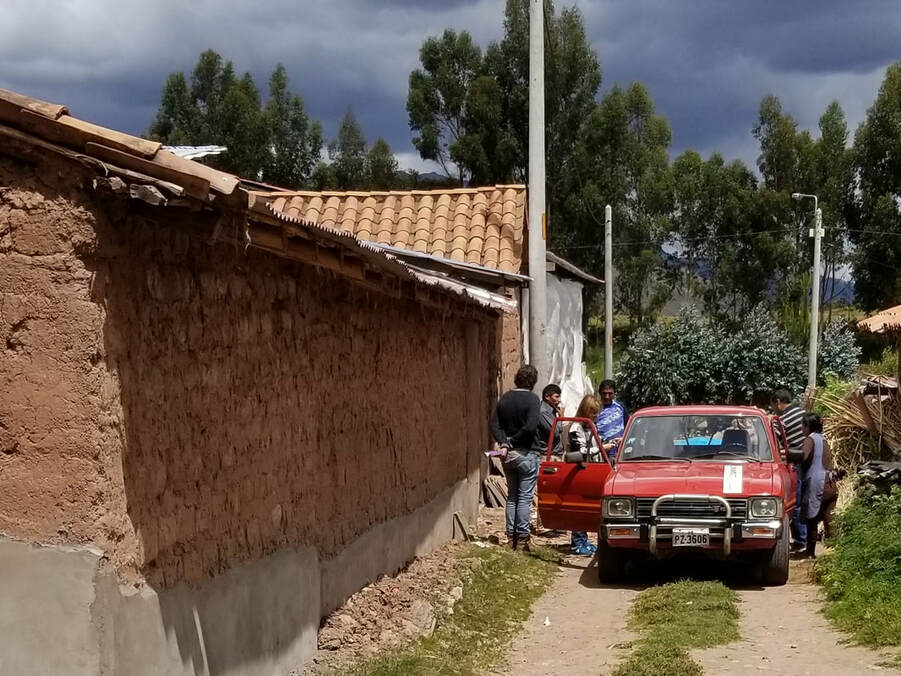 Dalton and Fernando ask locals where the home of Aguena Sana Velasquez is. We are in luck, we find her sister. Dalton and Fernando ask locals where the home of Aguena Sana Velasquez is. We are in luck, we find her sister. 2:15pm Huayllarquocha Community Visit We needed to try and locate our main informant in this community, Aqueda Sana Velasquez. I was amazed to see how this community has grown from a small little pit stop by the road of about 10 houses back in 2012, to what it now a burgoning community with stores, restaurants and even a small soccer field. With the help of Fernando Sello, we were able to locate Aqueda's sister, who took us to the community president, a wonder woman (who is an anthropologist) named Liz Aragon Bustenza. We had hoped to find the president and make an appointment to talk, but here we were with her in person. She was welcoming, forthright and after a bit of what we are now calling "political scrambling" by Dalton, we have schedule a time this Friday to show our film Stone & People to the community in their public hall at 4pm. Wow...so much done is such a short period of time. It was clear that they wanted to see our film and discuss next steps with us first before inviting the park anthropologists into their community. Our value as non-partisan anthropologists who are interested in both sides of the park management story is becoming clearer day by day...and today it was VERY clear in Huayllarquocha. Huayllarquocha Museo and Community Craft Market Is Not Here Anymore I was sad to see that the amazing Inka Museo and beautiful craft marketplace isn't active here anymore. When we were here in 2010 to 2012, the Museo and market was a great location to learn about local plants and crafts. But, apparently, this costly and well conceived community project wasn't supported by the Ministry, so it went out of business. This fact will be a topic for our discussions with this community to understand what happened and how to avoid expenditures like this in the future that are doomed to failure. Slideshow below is of photos of what the Museo Inka and the craft market looked like back in 2012.  3:30pm Looking For External Hard Drives For 4K Video Dalton is taking amazing video is 4K. This filming is data heavy and requires massive storage space, which neither of us prepared for by bringing large enough hard drives. In addition, every effort needs to be made to protect our original media files from loss and possible hard drive failure. So, we went in search, and I do mean SEARCH, for 4TB hard drives in the city of Q'osqo. Parking in this city is pretty much non-existent, so we parked on the outskirts of the Plaza de Armas and walked...WALKED...climbed stairs...STAIRS...looking for every electronics store in this city. I think we visited about 30-40 little booths, stores, markets to try and find a reliable brand of hard drive with 4TB capacity. Finally, about an hour (and buns of steel workout) we found a little booth in a mall on the 5th floor with 2 drives...to the tune of $950 soles (about $300 US) Then, they wouldn't take my Mastercard!!!! I just about lost it. First time I can honestly say I really was a bitch! Had to walk down 5 flights of stairs and walk 10 blocks to find an ATM. I was baked! Dalton walked back to get the drives. Fernando walked back to the car. And I sat outside on the corner of a InkaFarma while thunder and lightening threatened to rain like cats and dogs and my raincoat was in the car. Luckily Fernando reached me just as it started to rain and we picked up Dalton and headed back to the flat as the storm started to dump! 5:30 pm Brain Dump & Early Dinner At Flat Both Dalton and myself sat on our buns of steel and enjoyed a bit of homemade food (both of us are being careful with our stomachs) and did a brain dump of the day. Came up with a list of questions for future interviews. Discussed the learning from the day. Outlined what we learned during our various meetings during the day and how to proceed. In the back of my mind is the need to teach all that we are doing as visual anthropologists to future students of the field school we will start here in 2020. Here are my new class titles:
|
Author
Maren Elwood is a visual anthropologist and founder of On-Site Expeditions...a field school that will provide scholarships to aspiring heritage professionals. The first field school session will be in January 2020. Archives
September 2023
|
